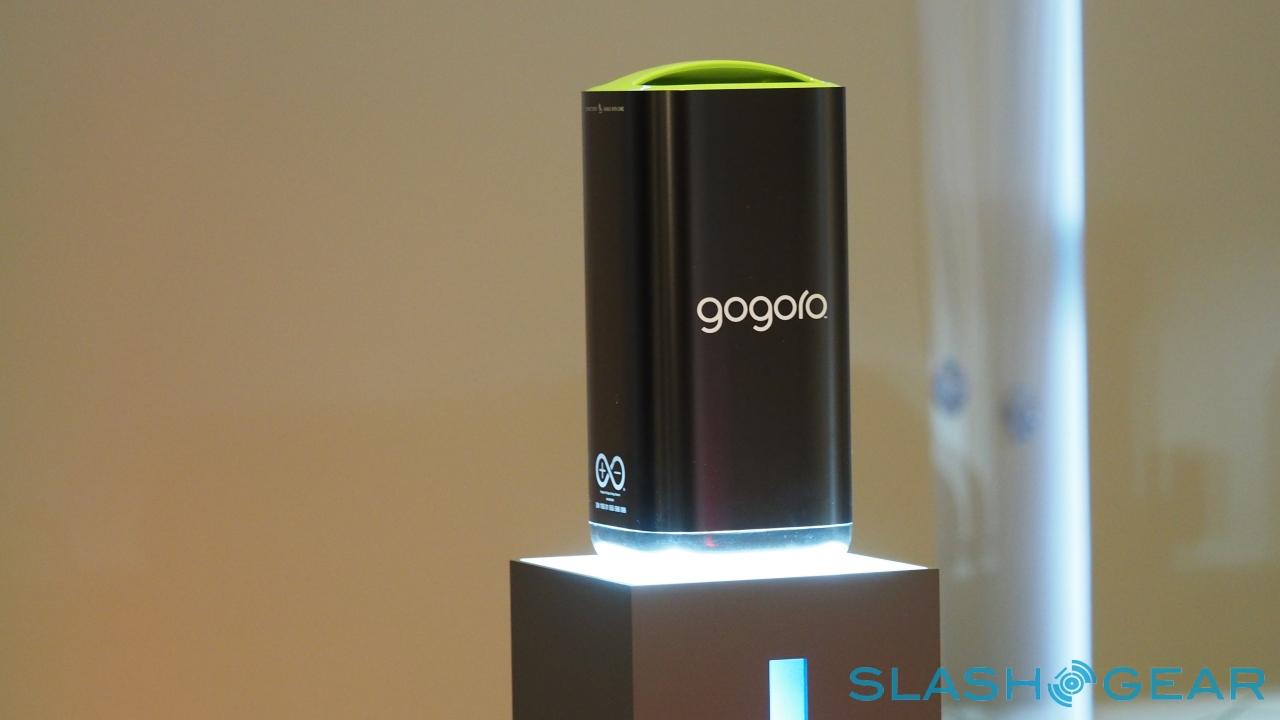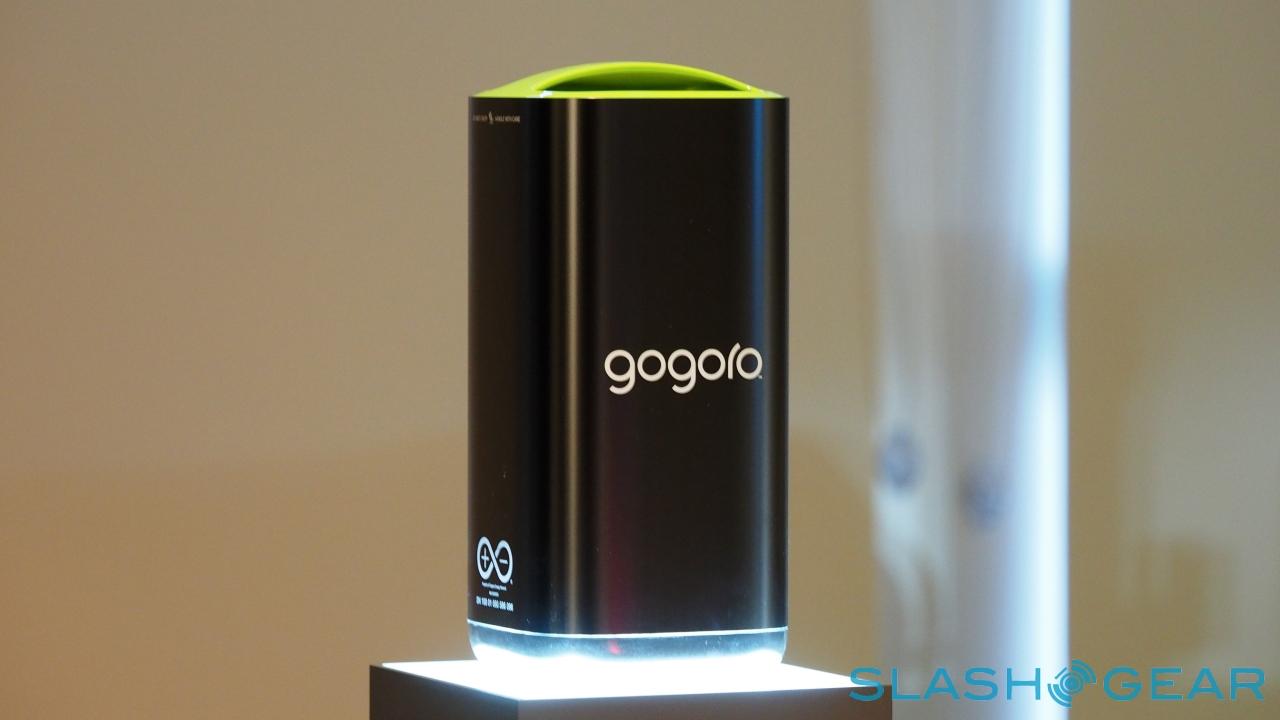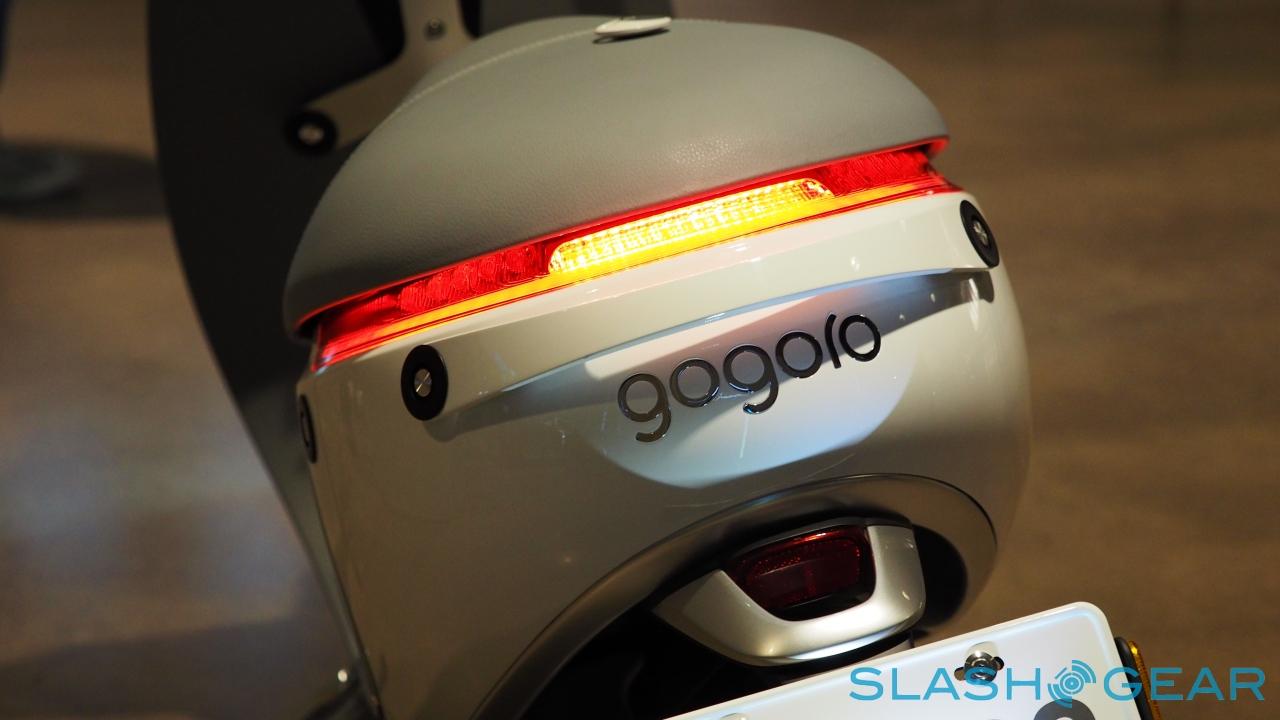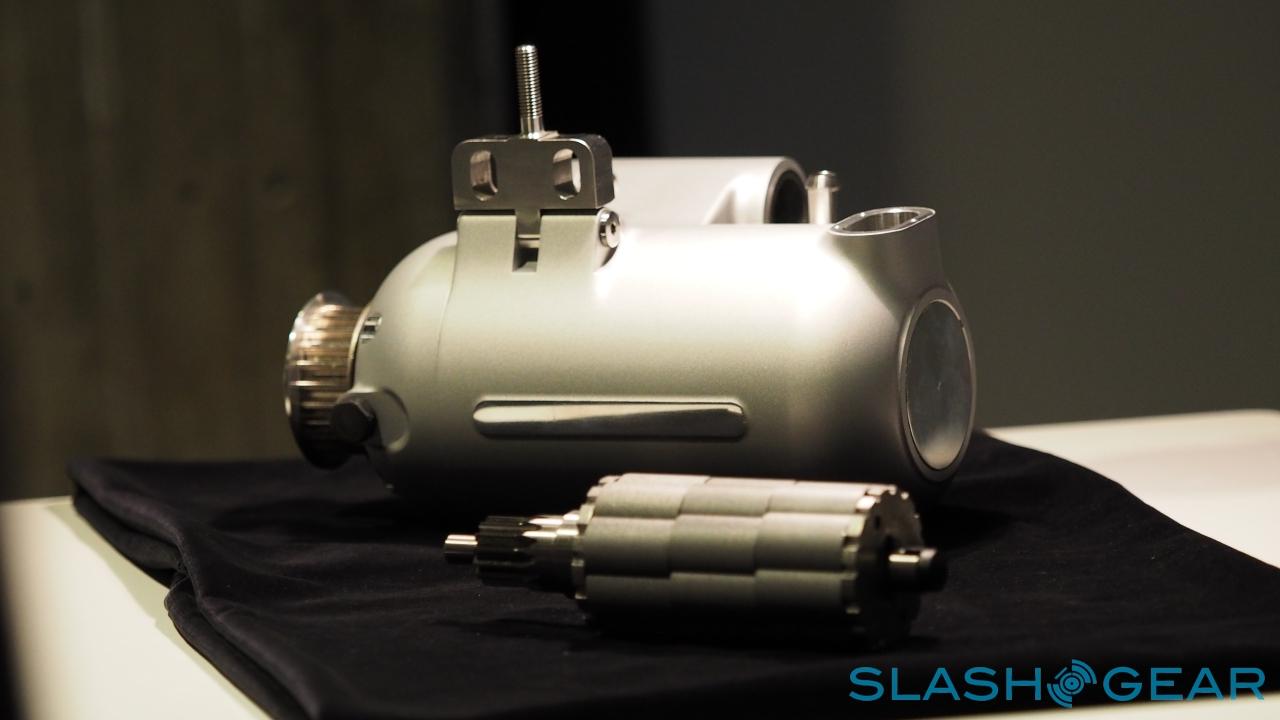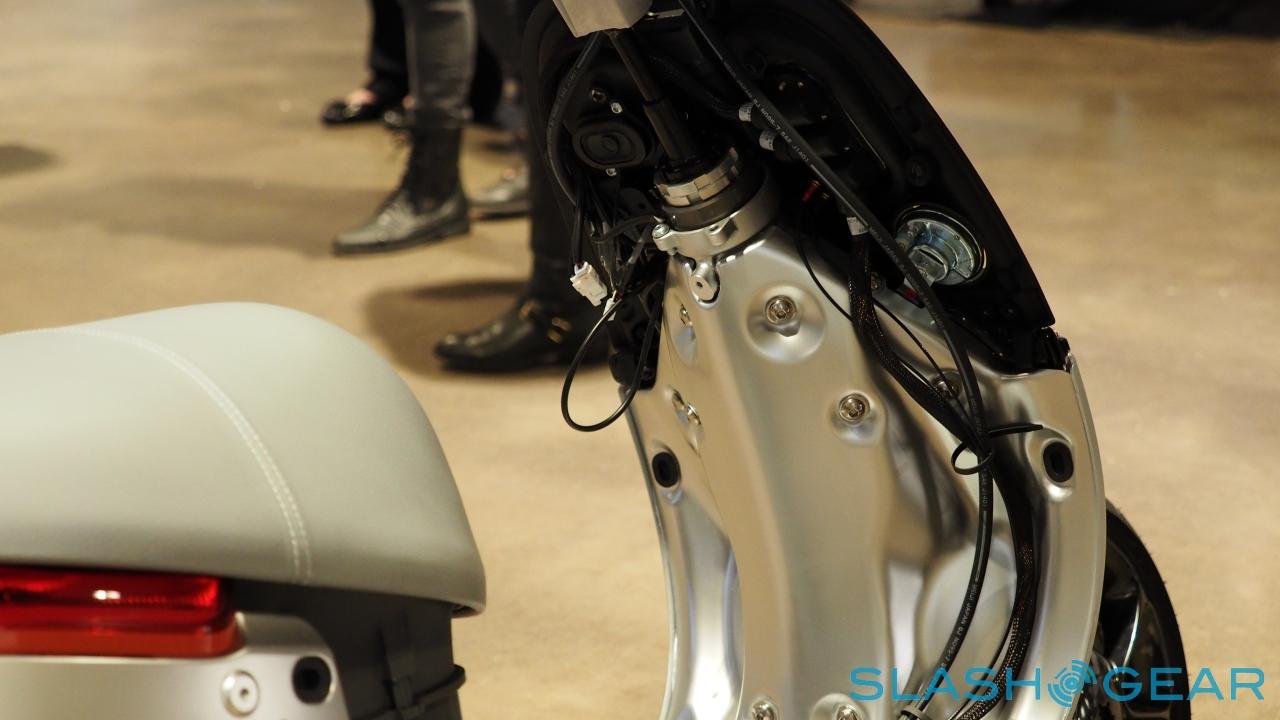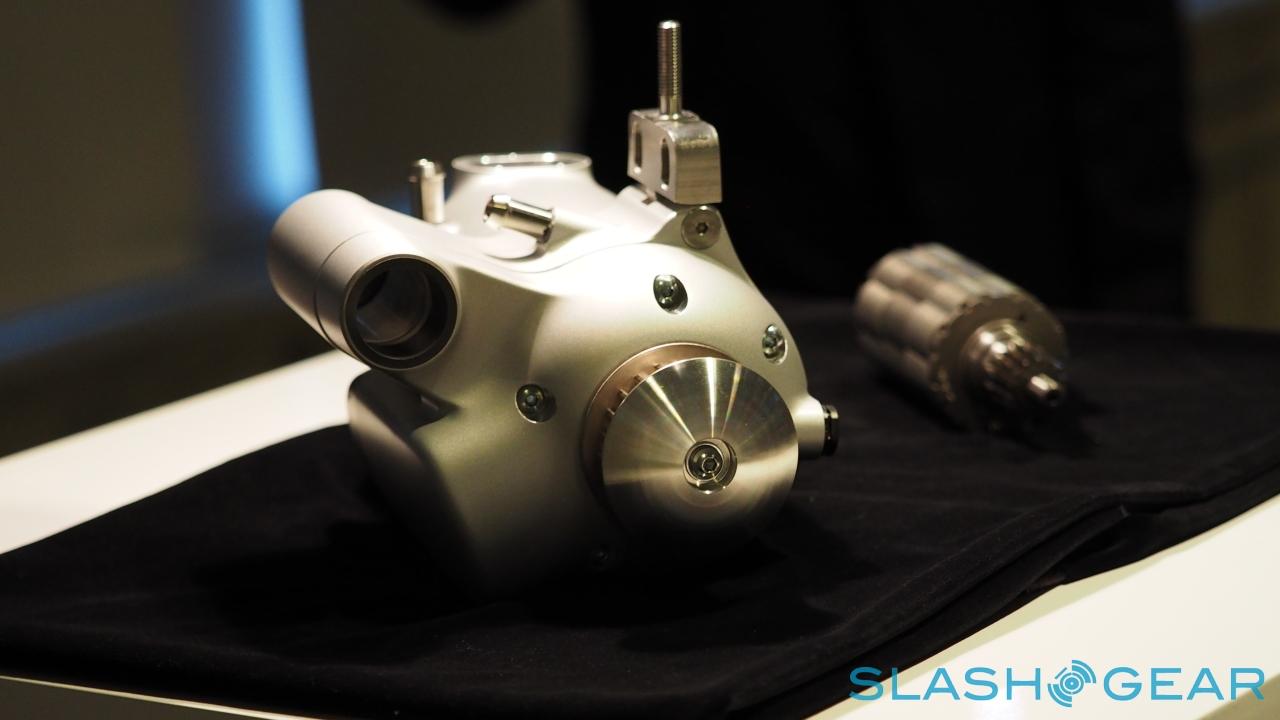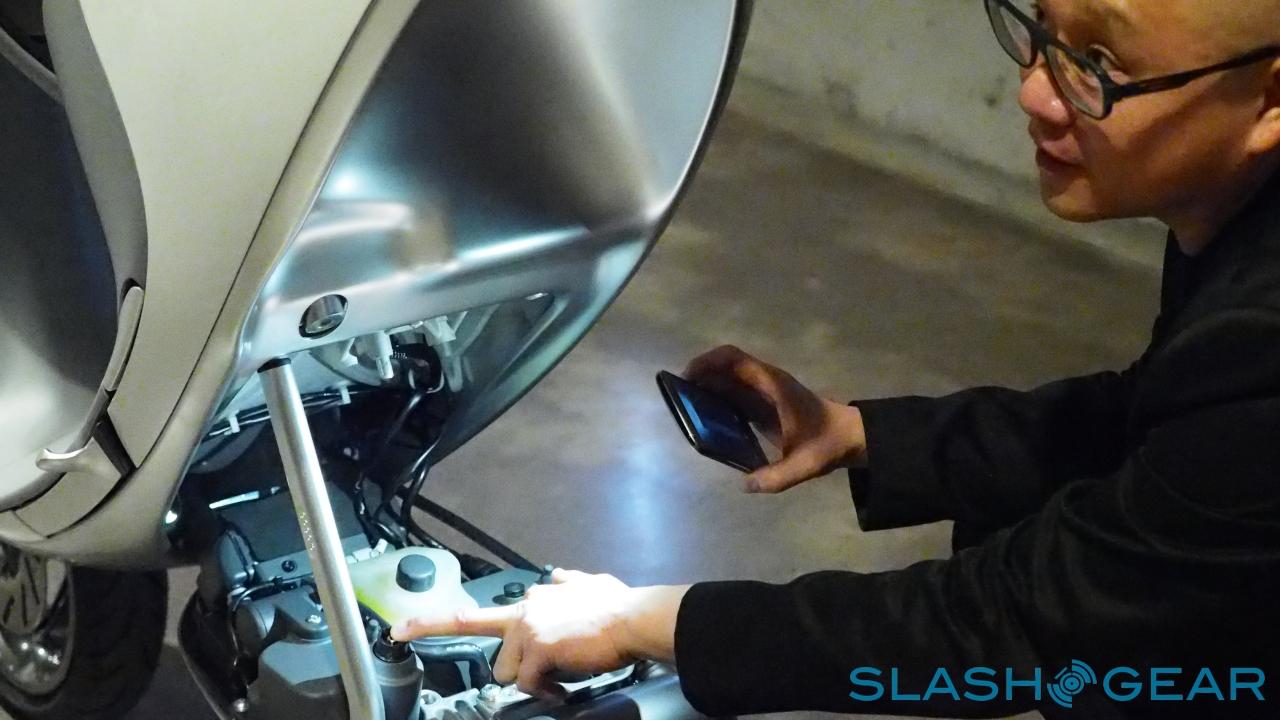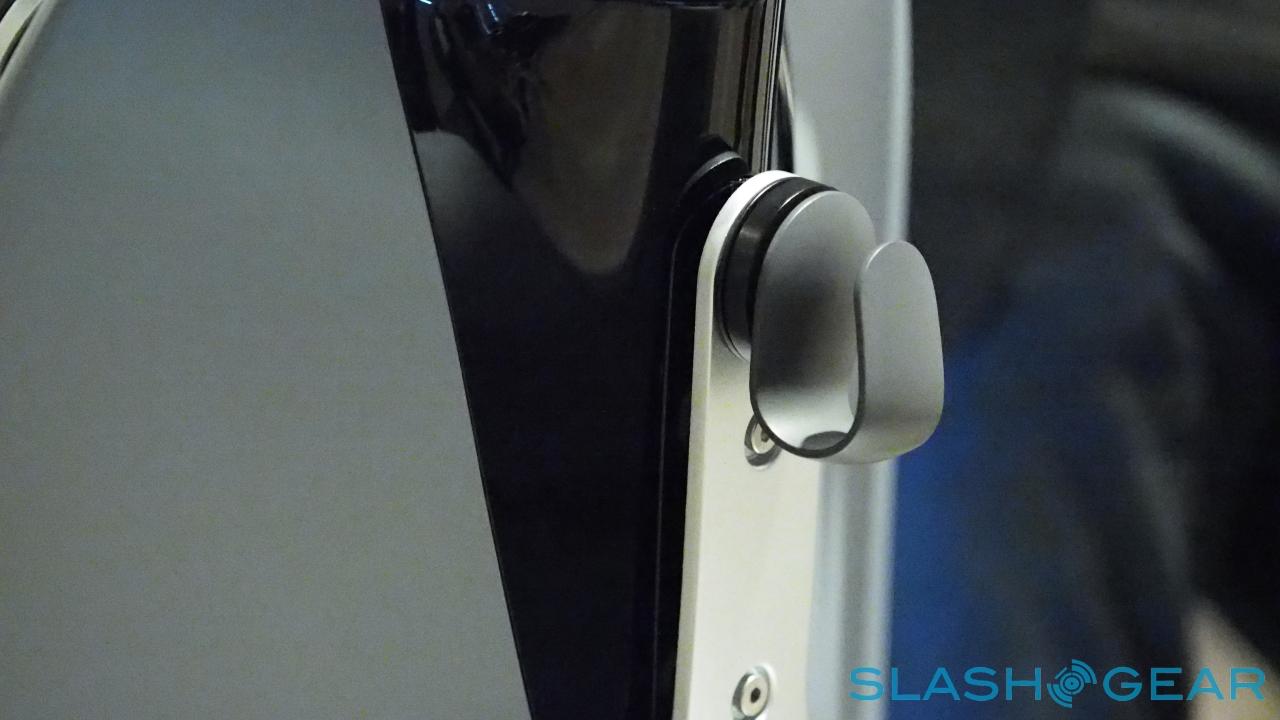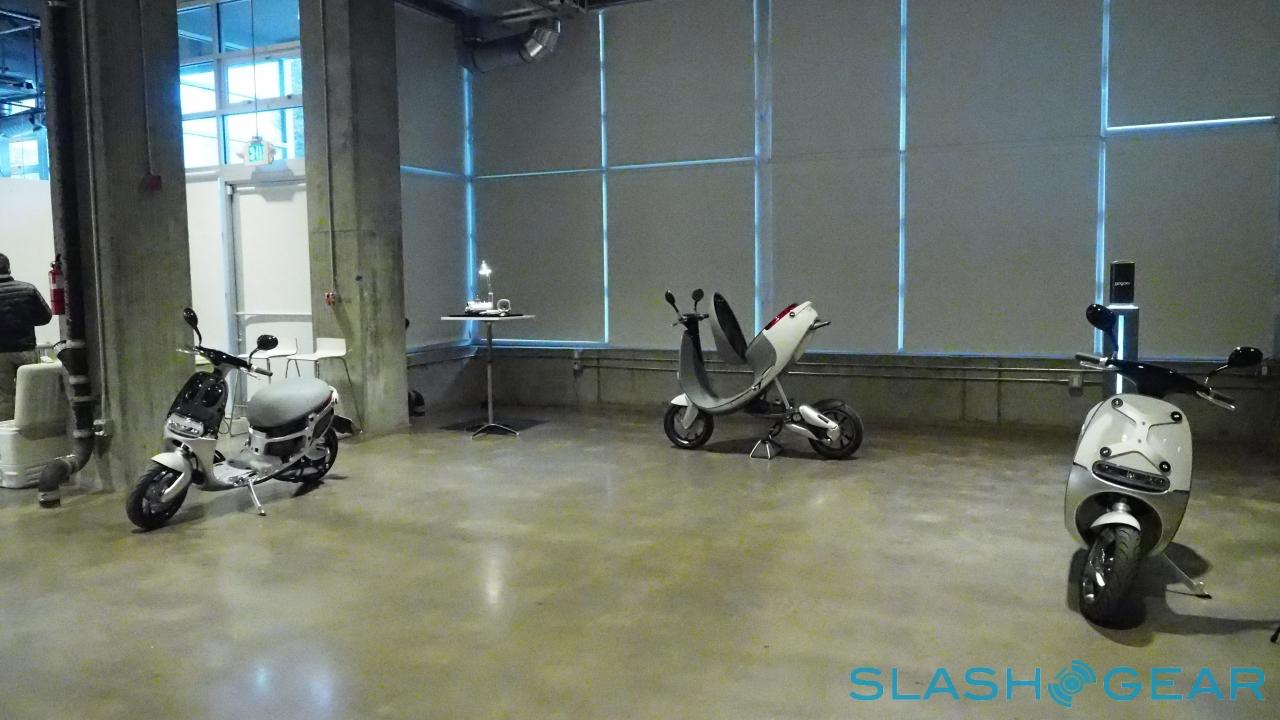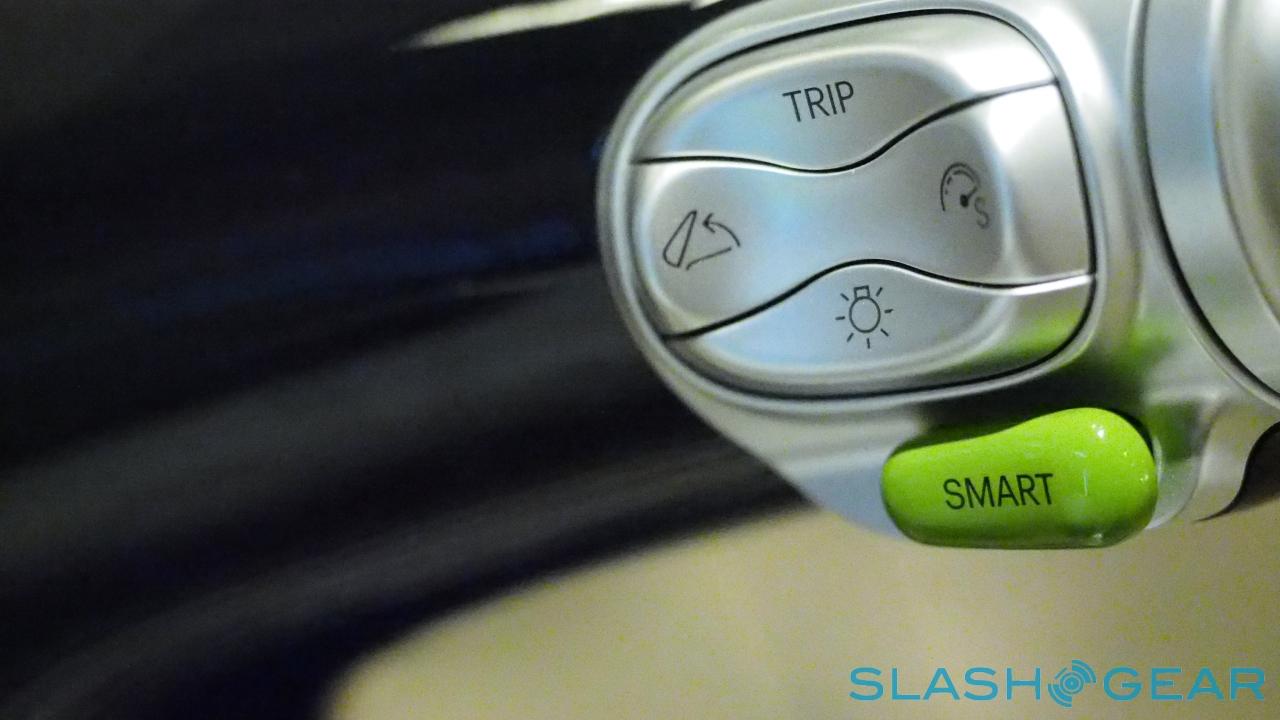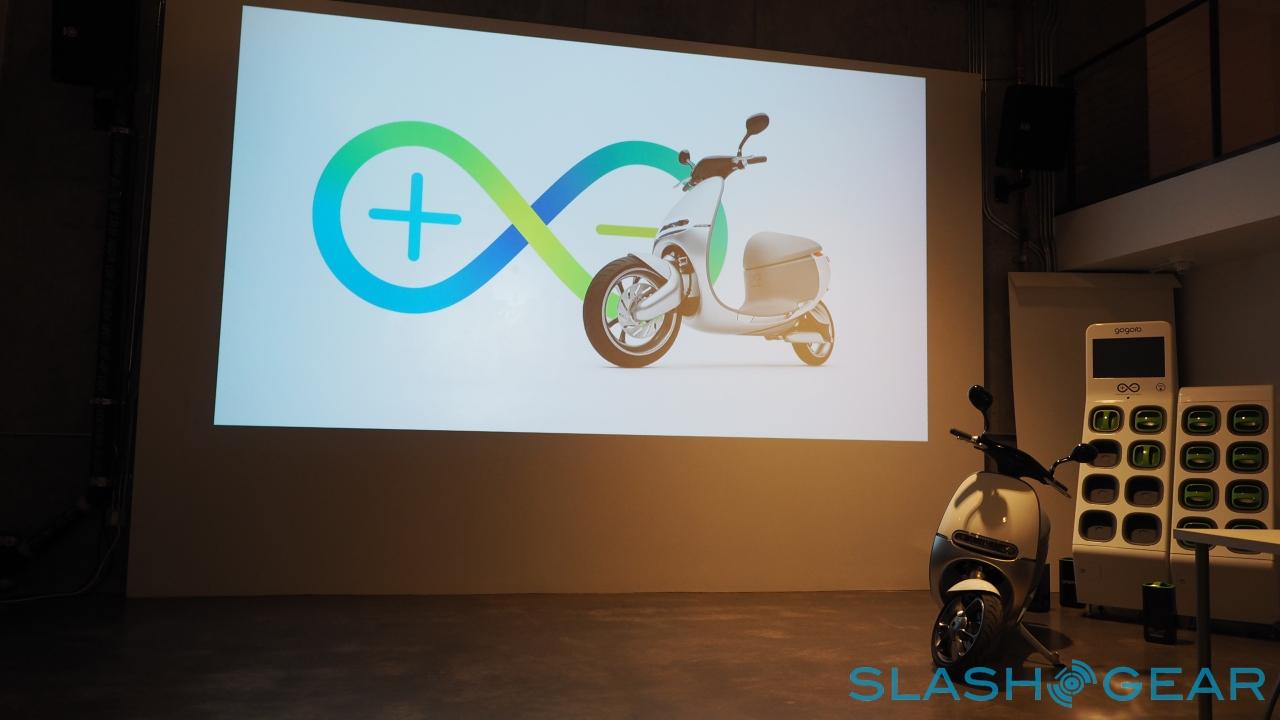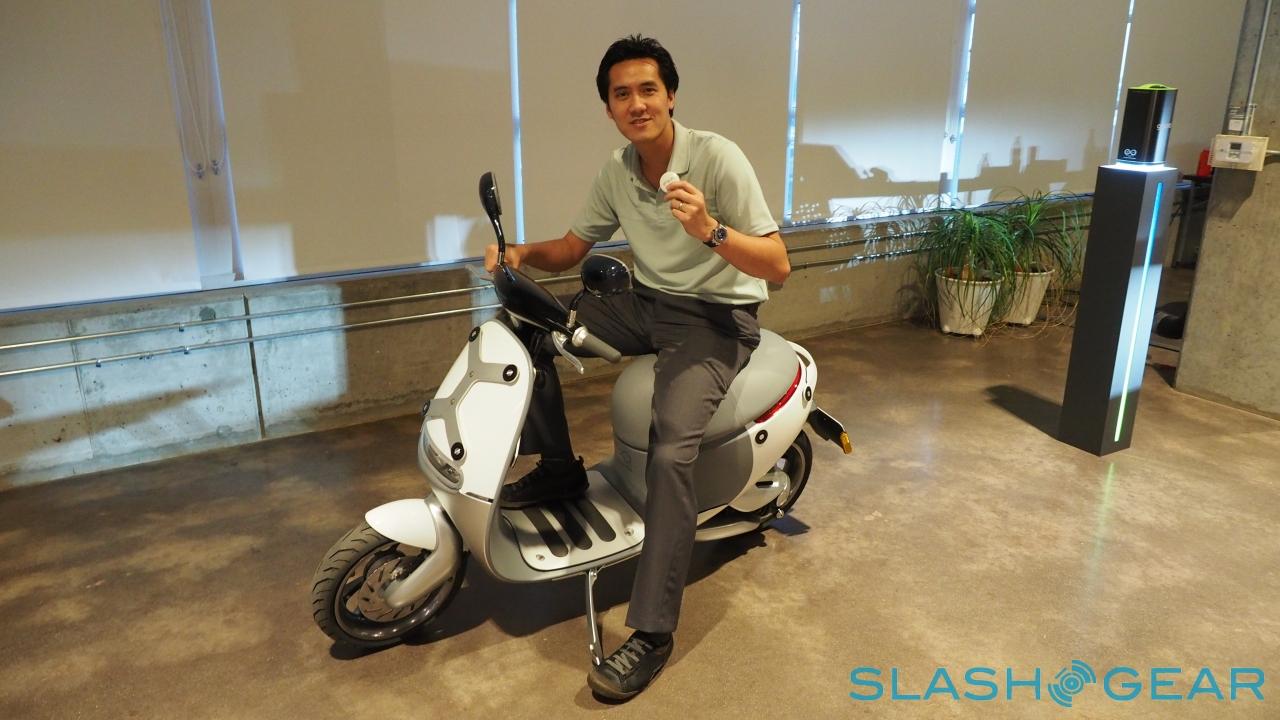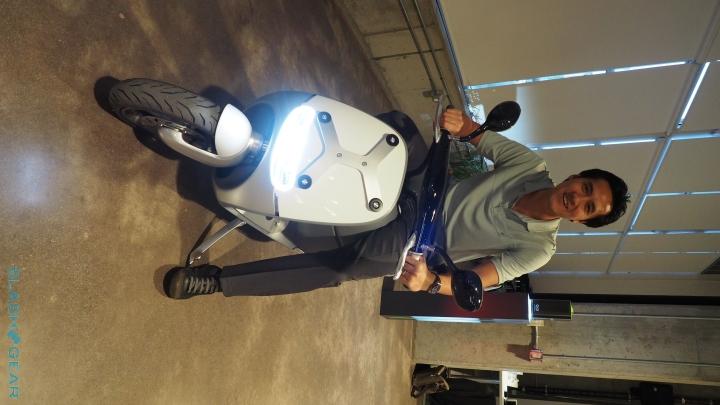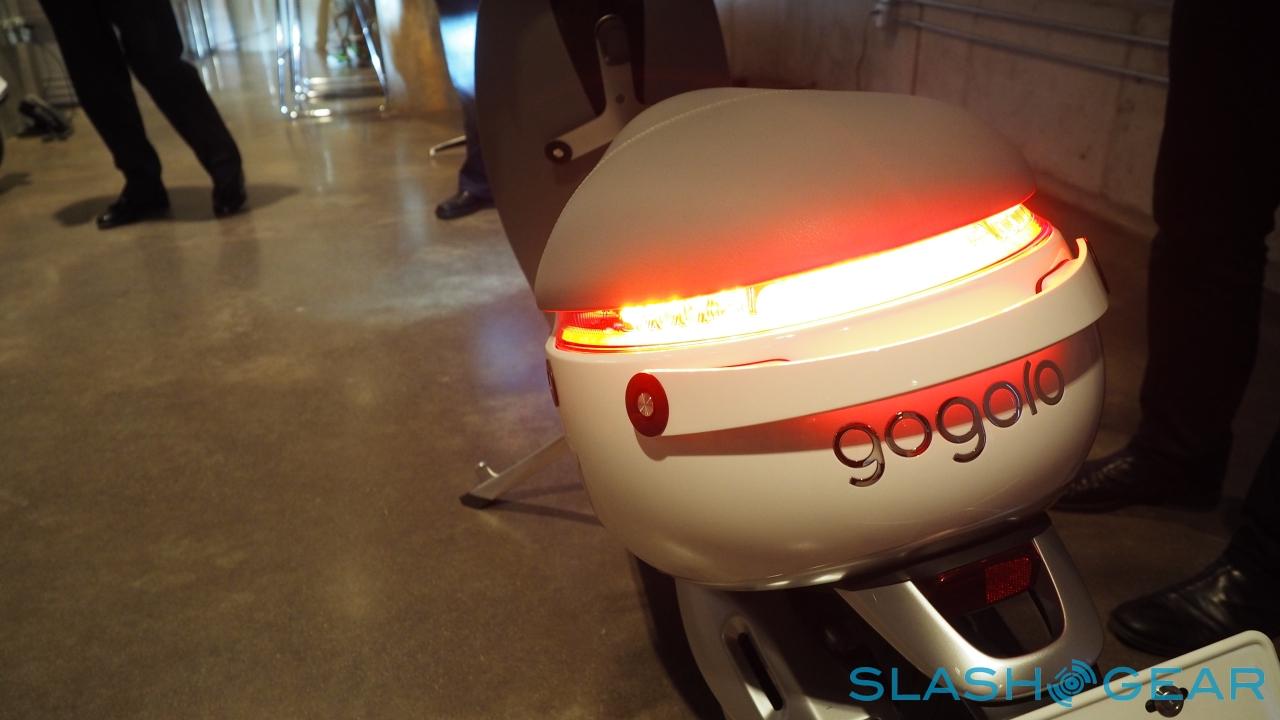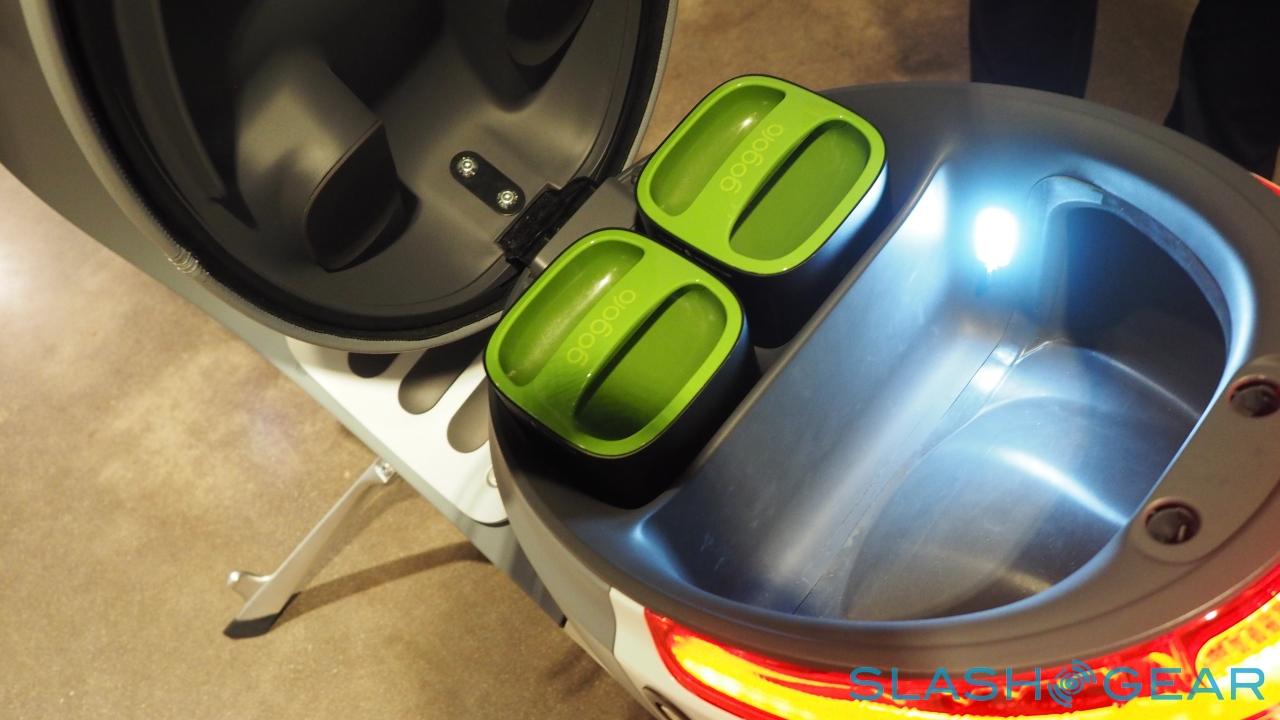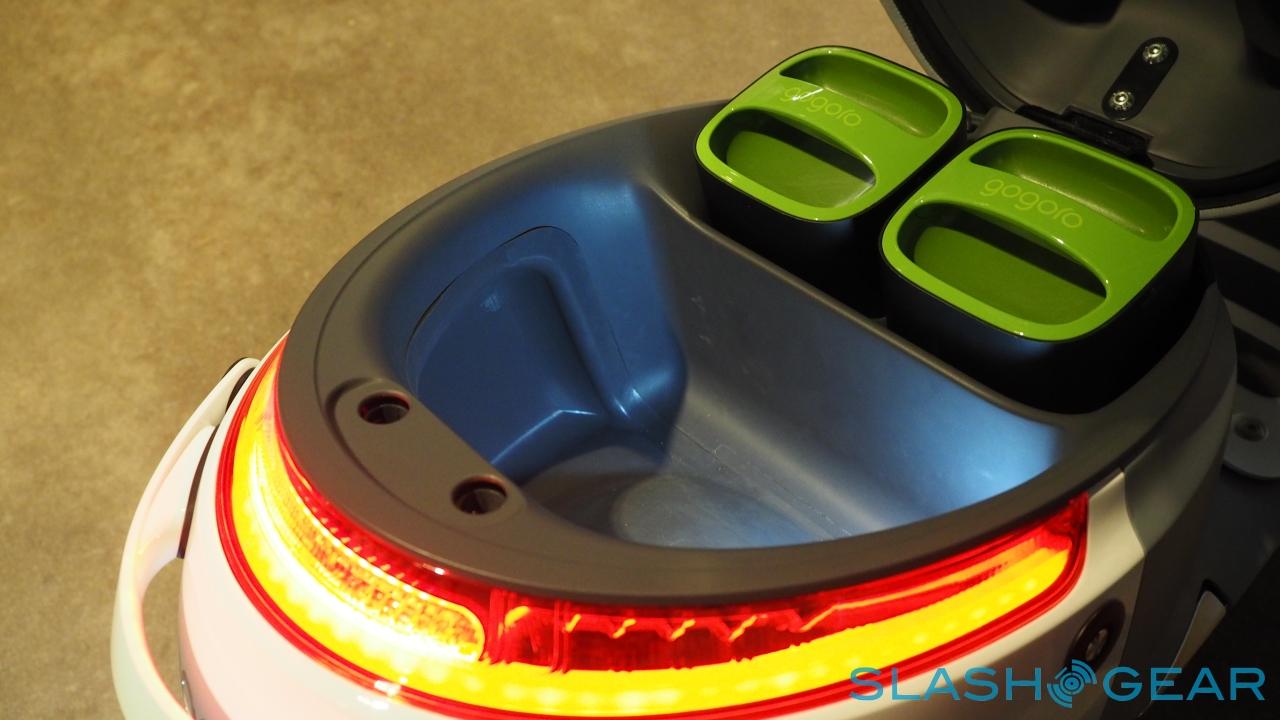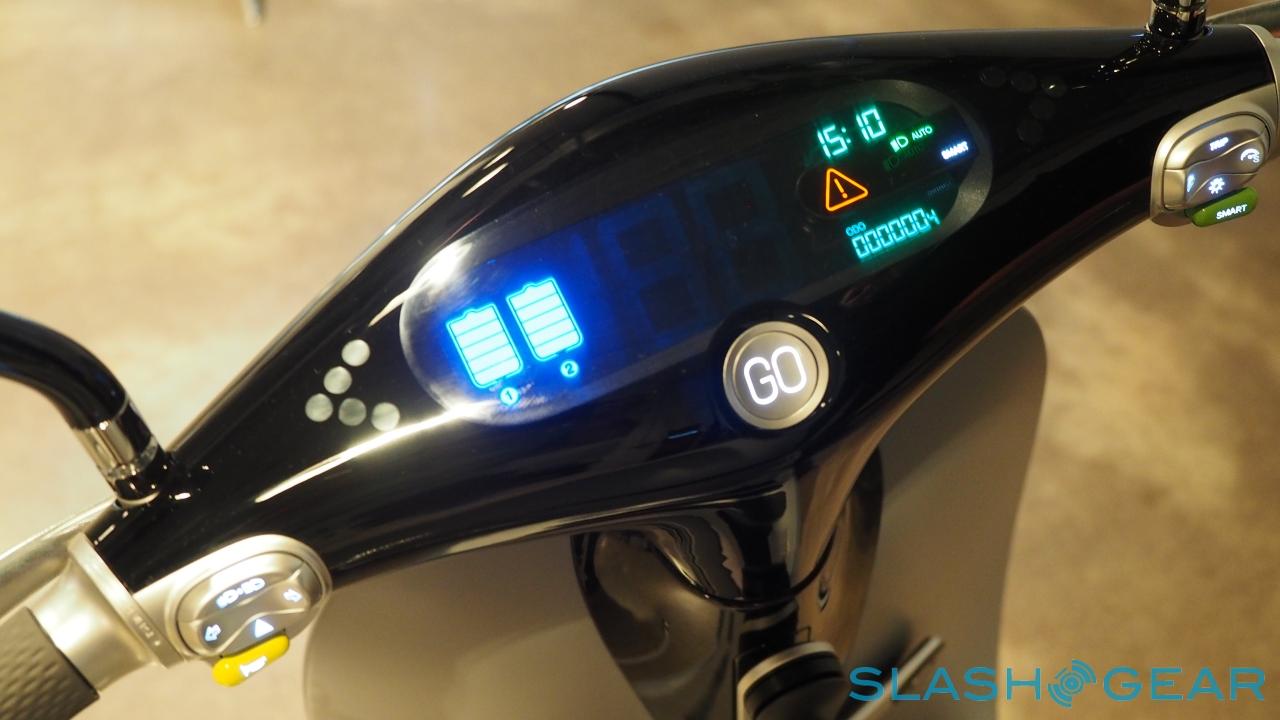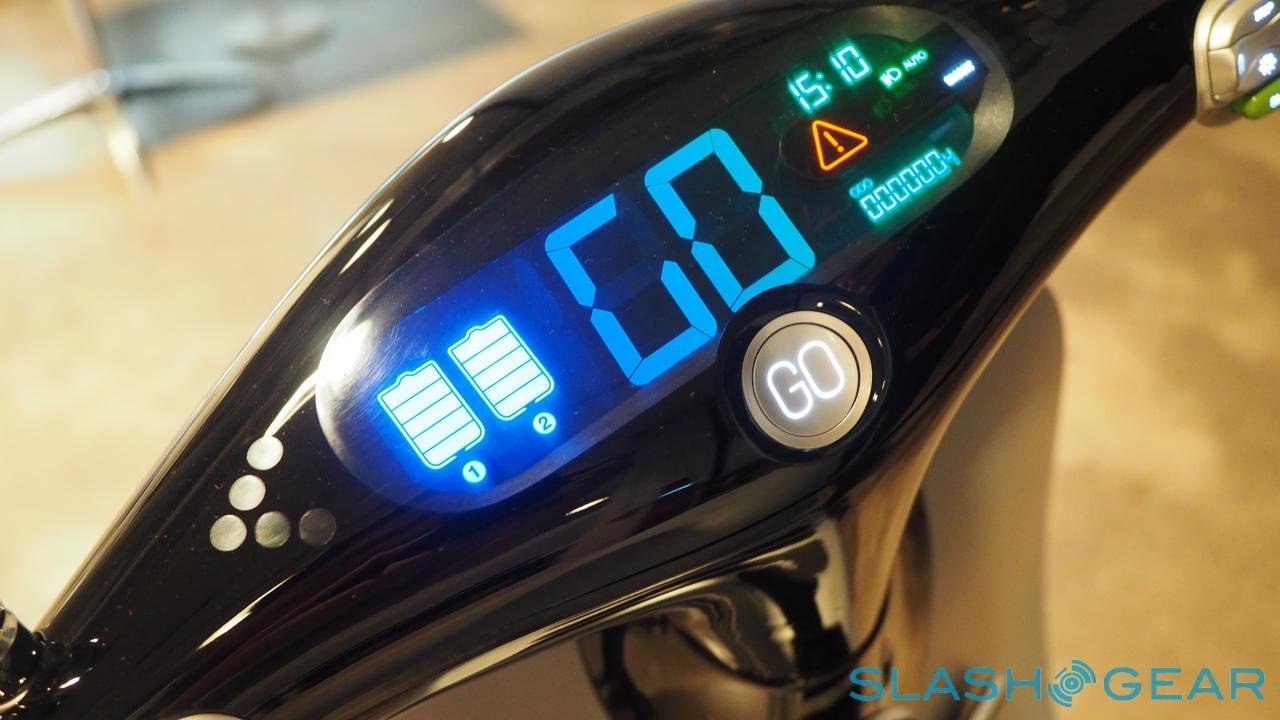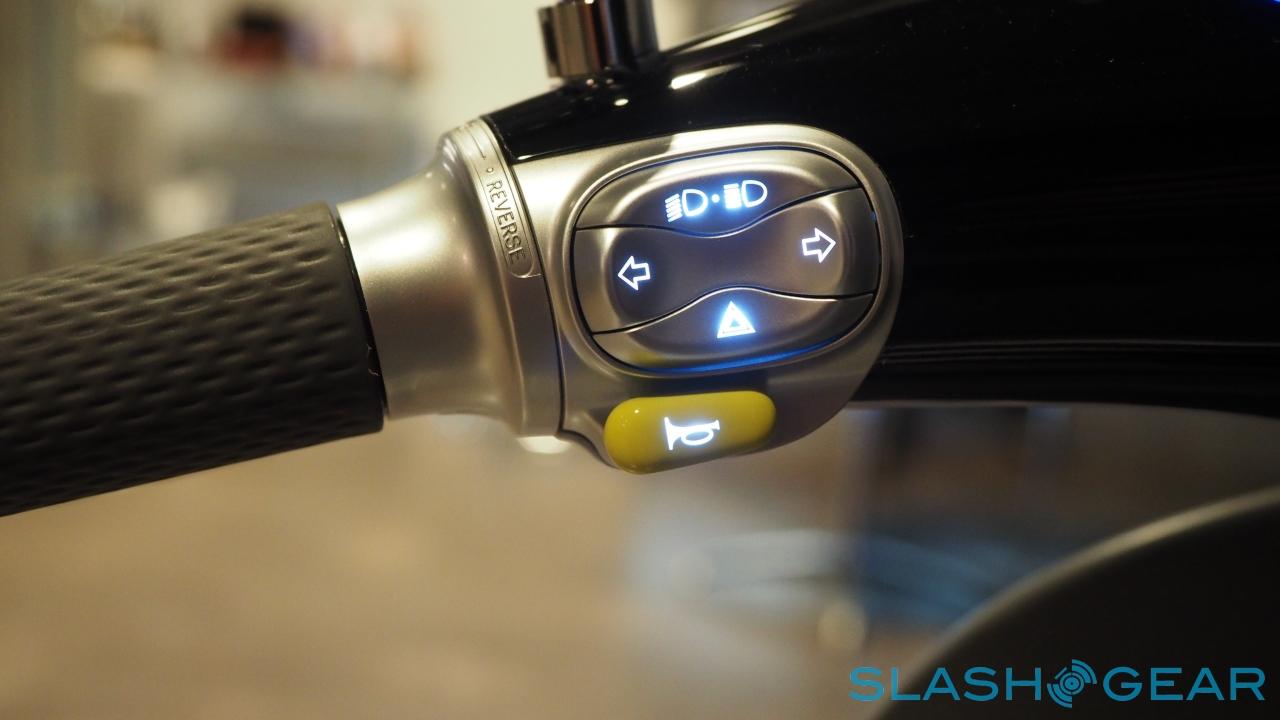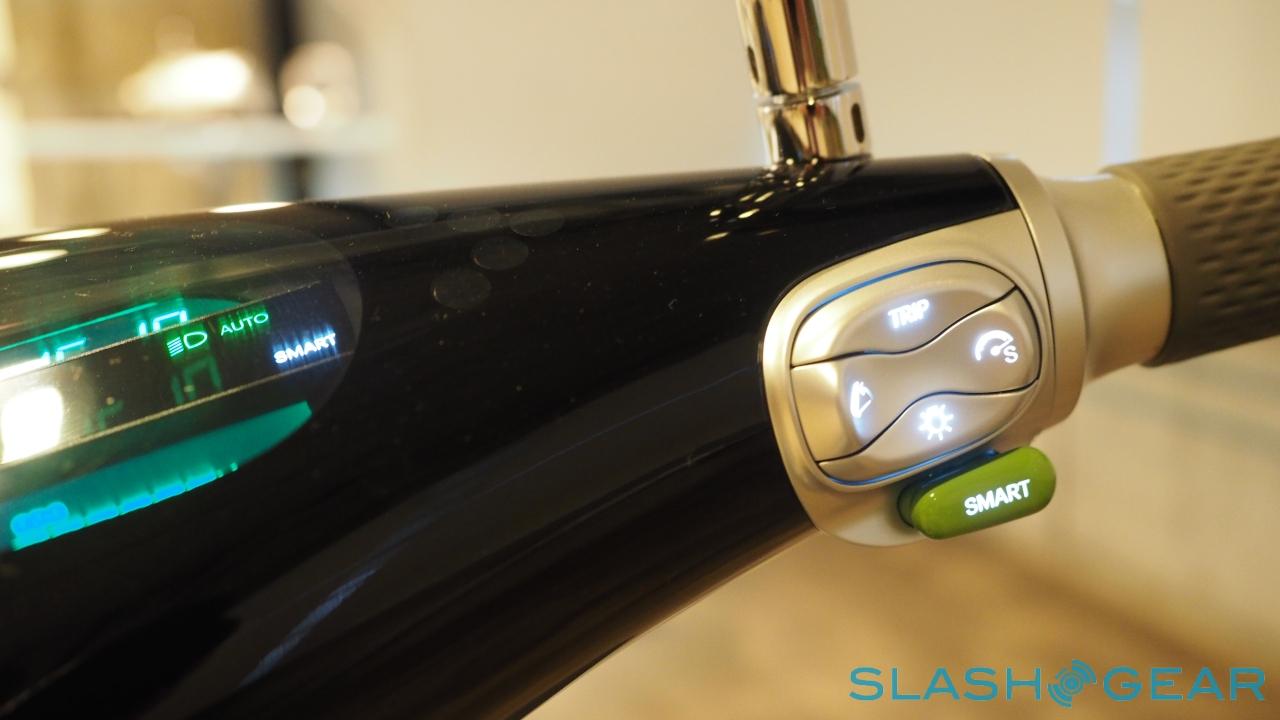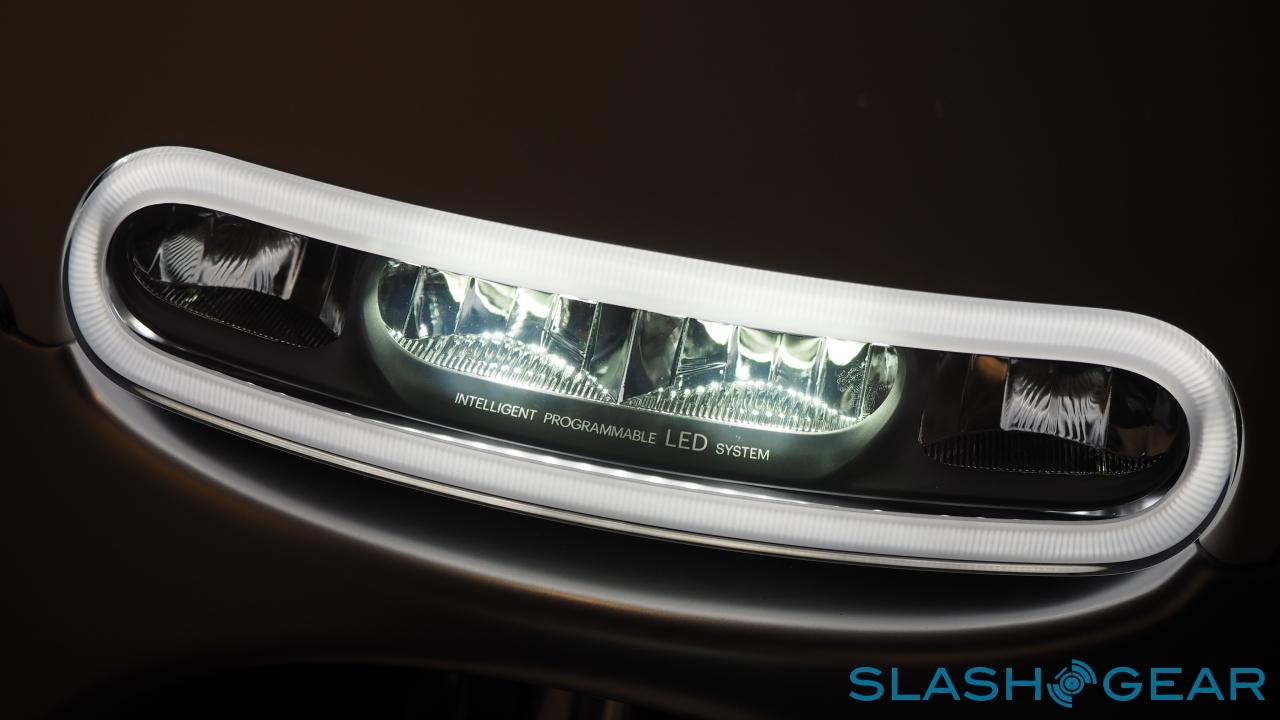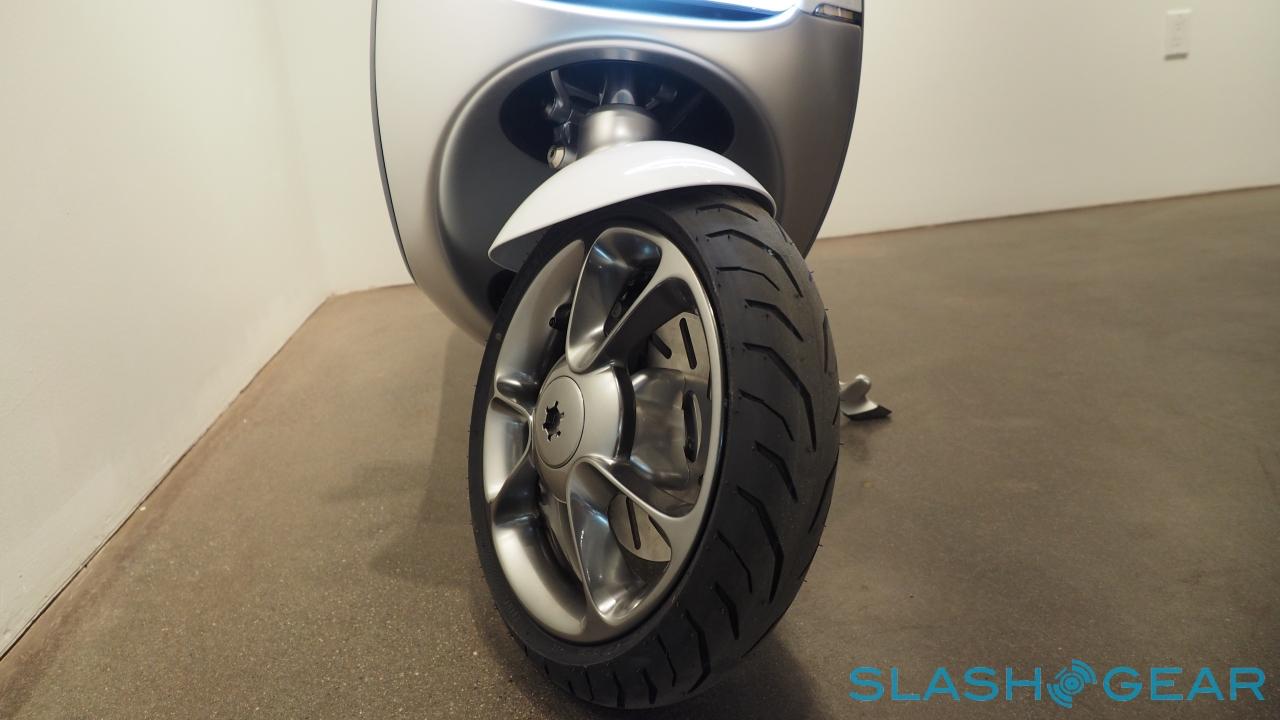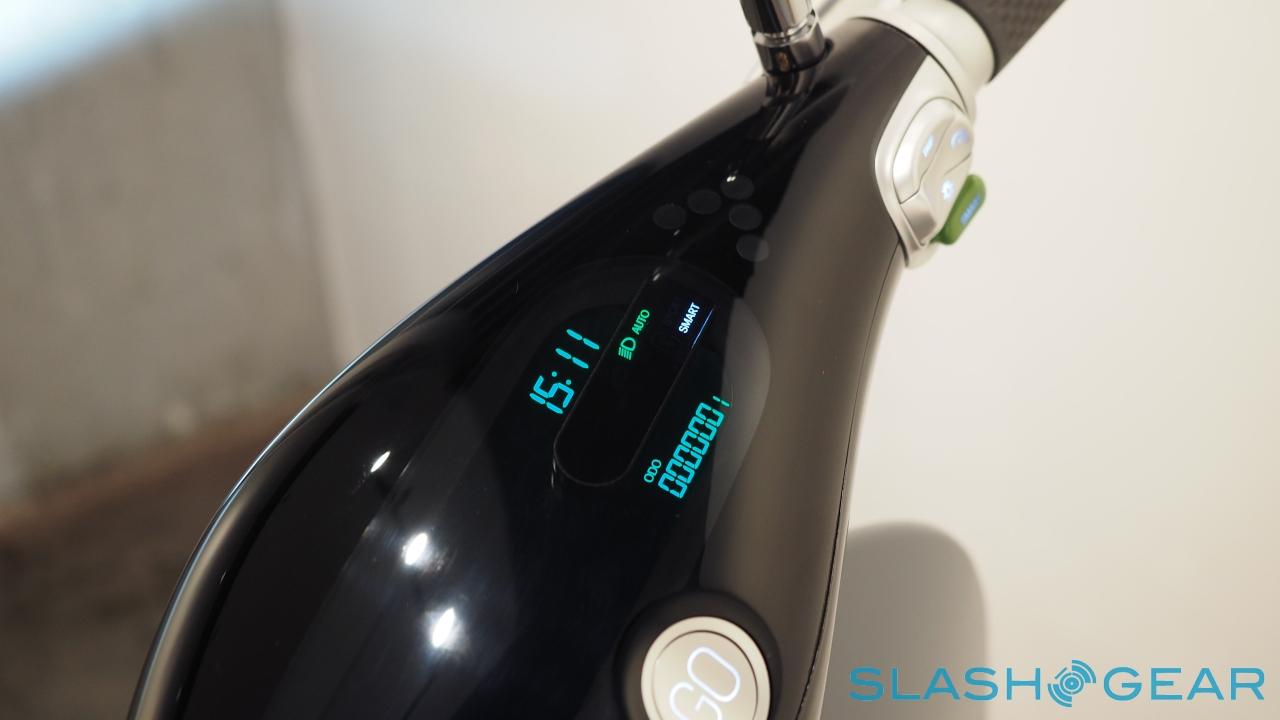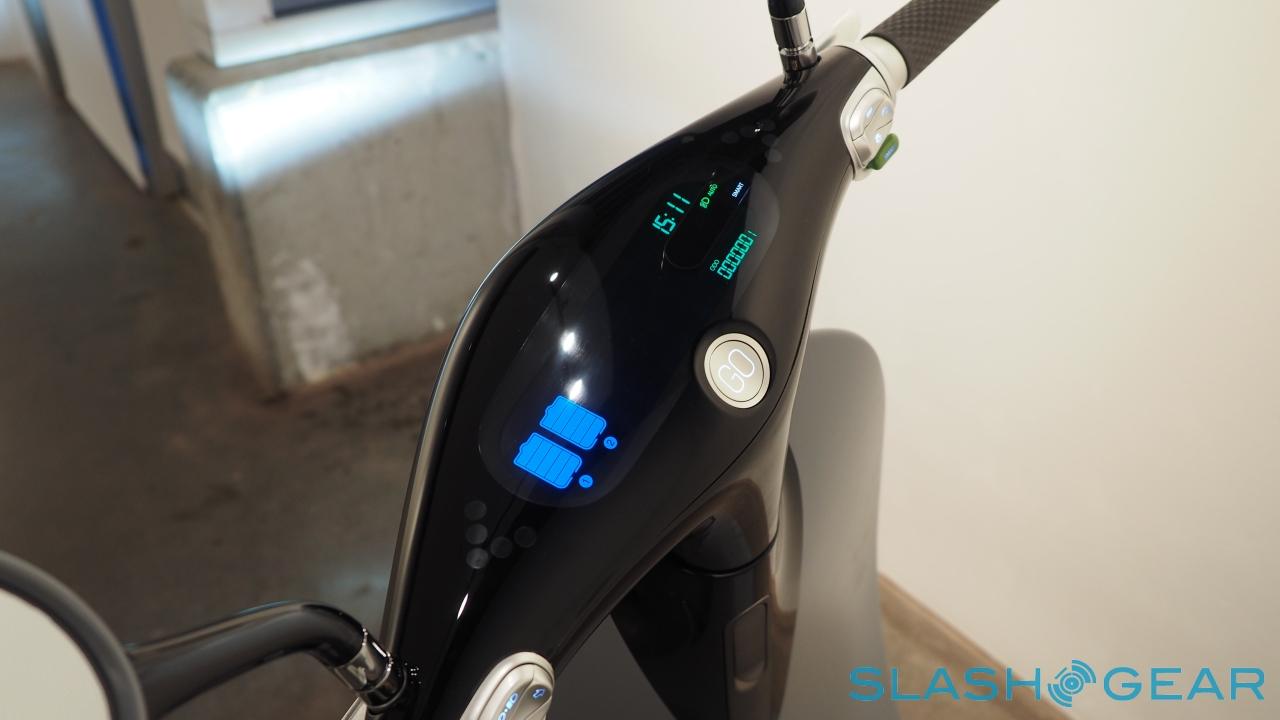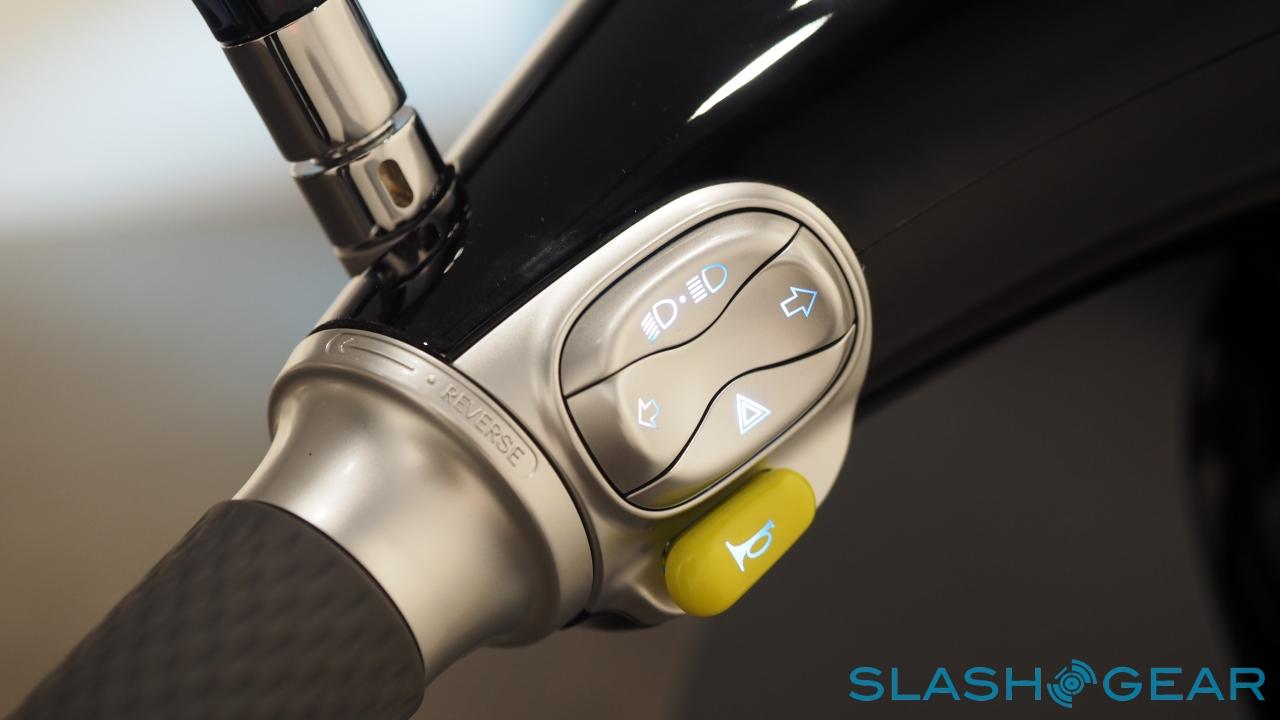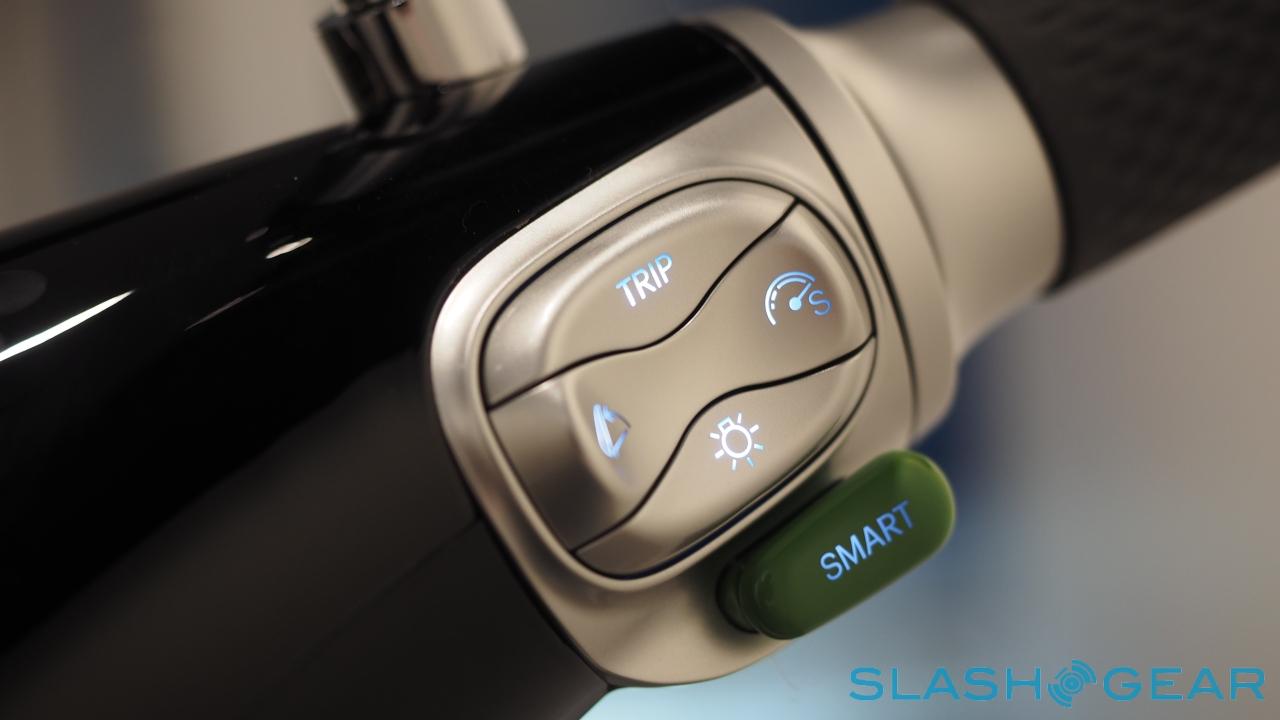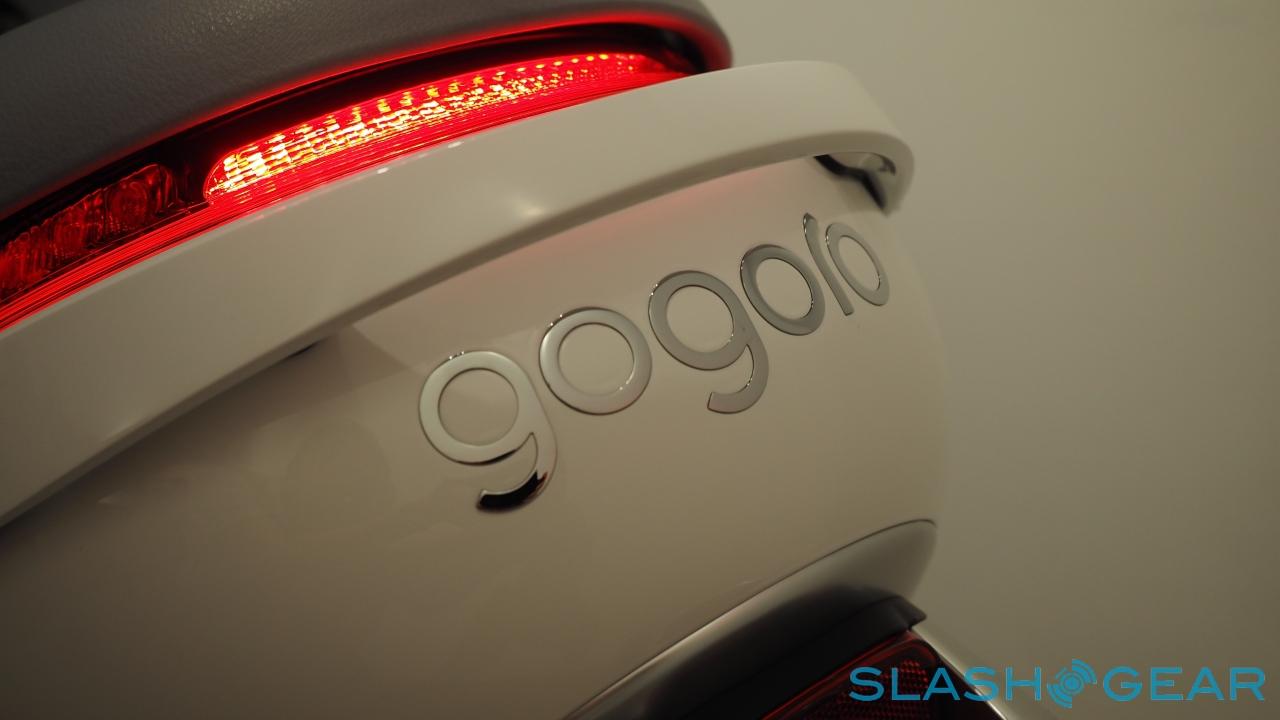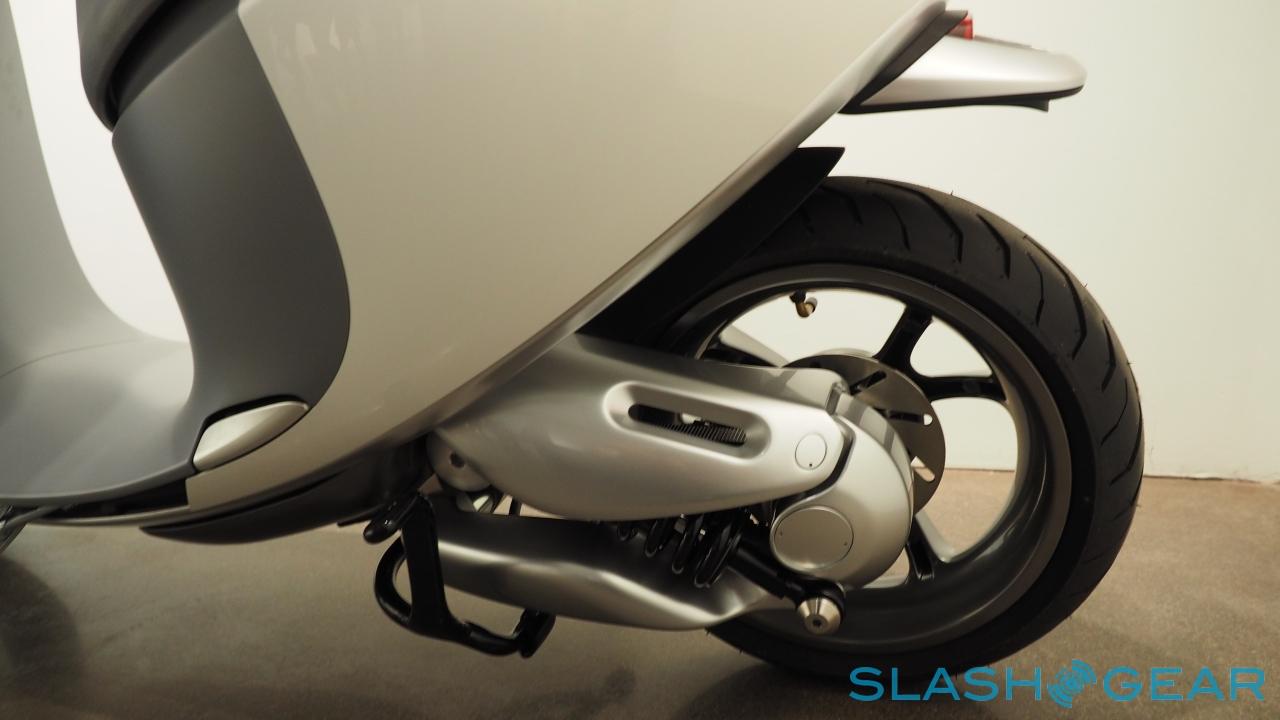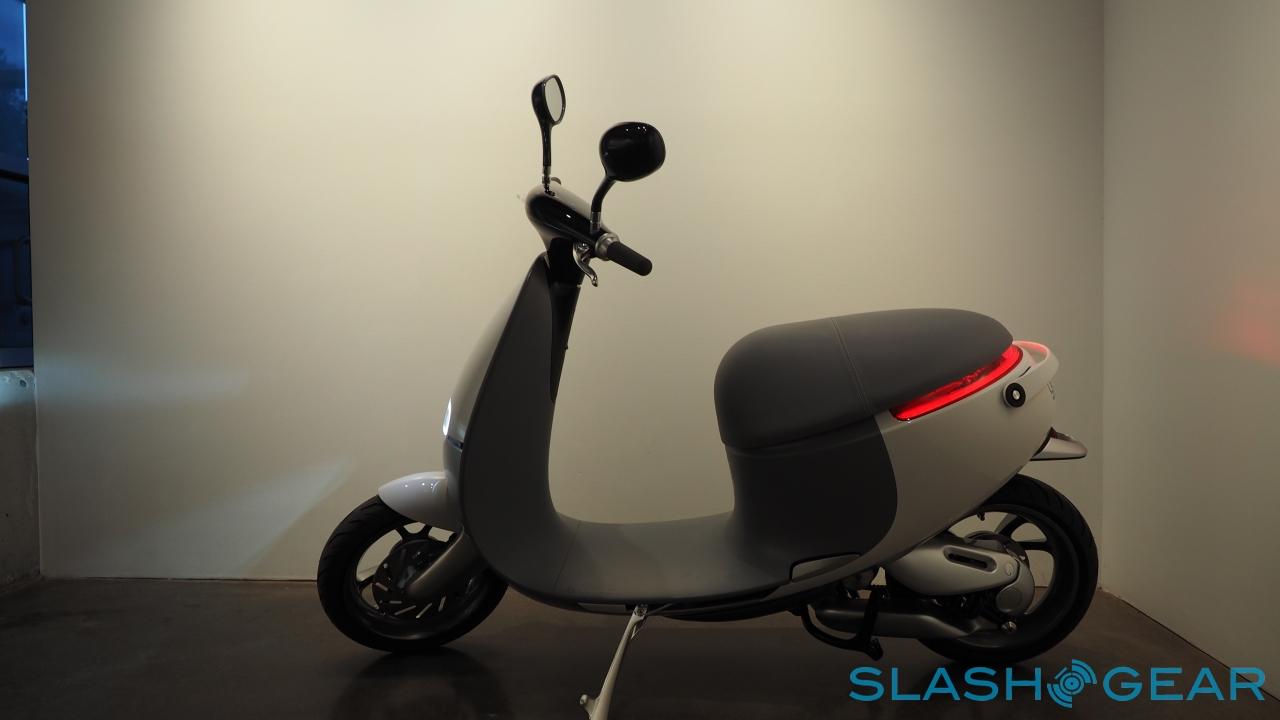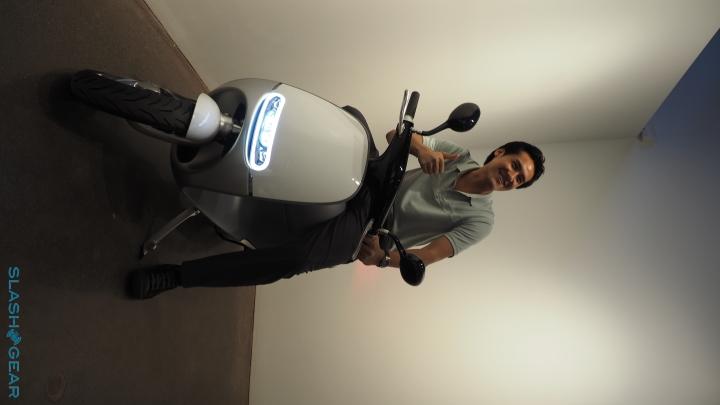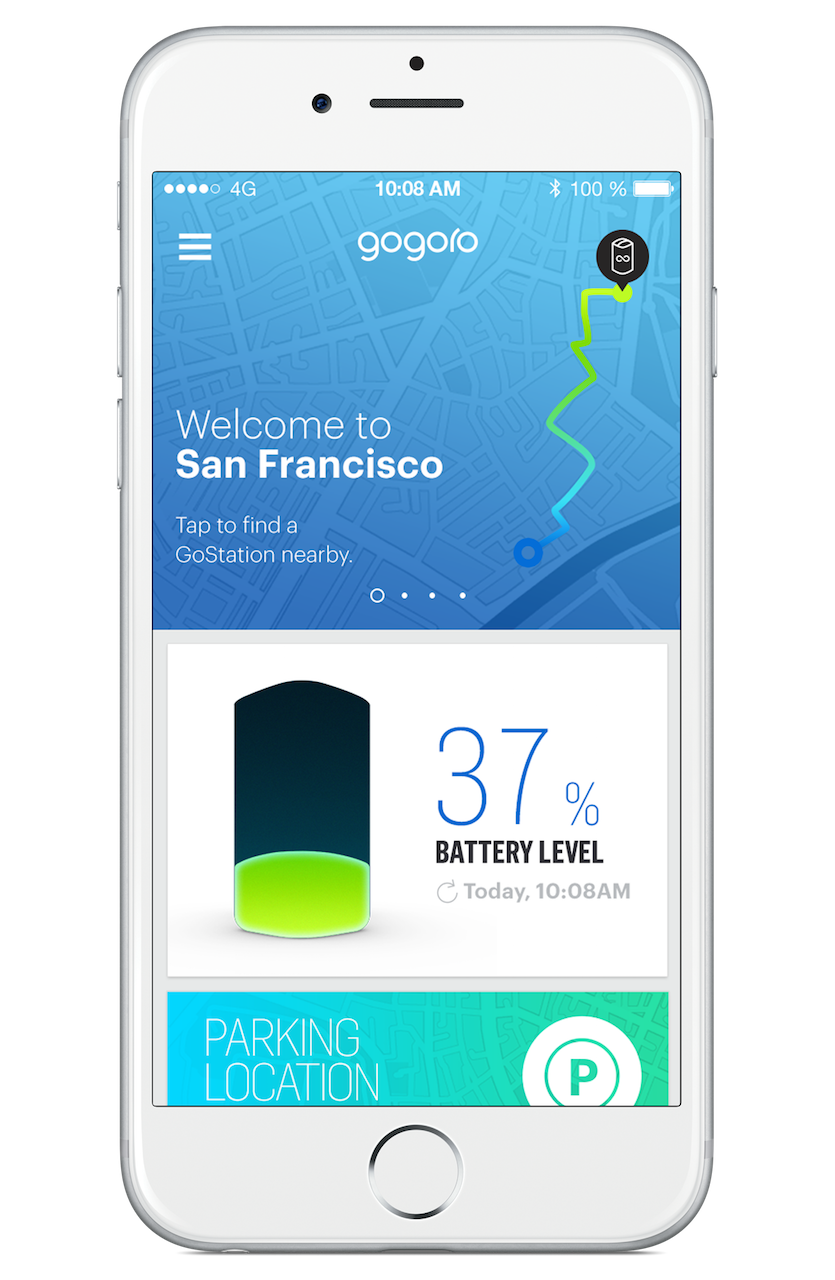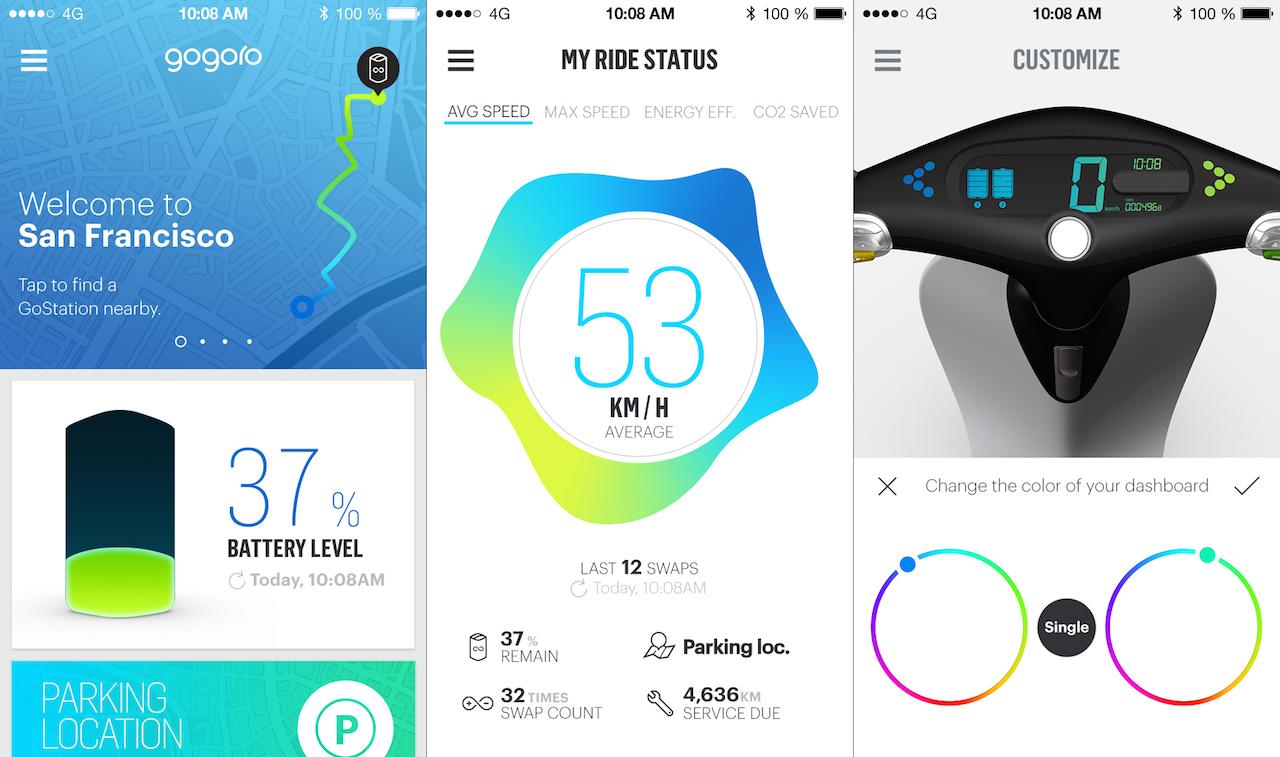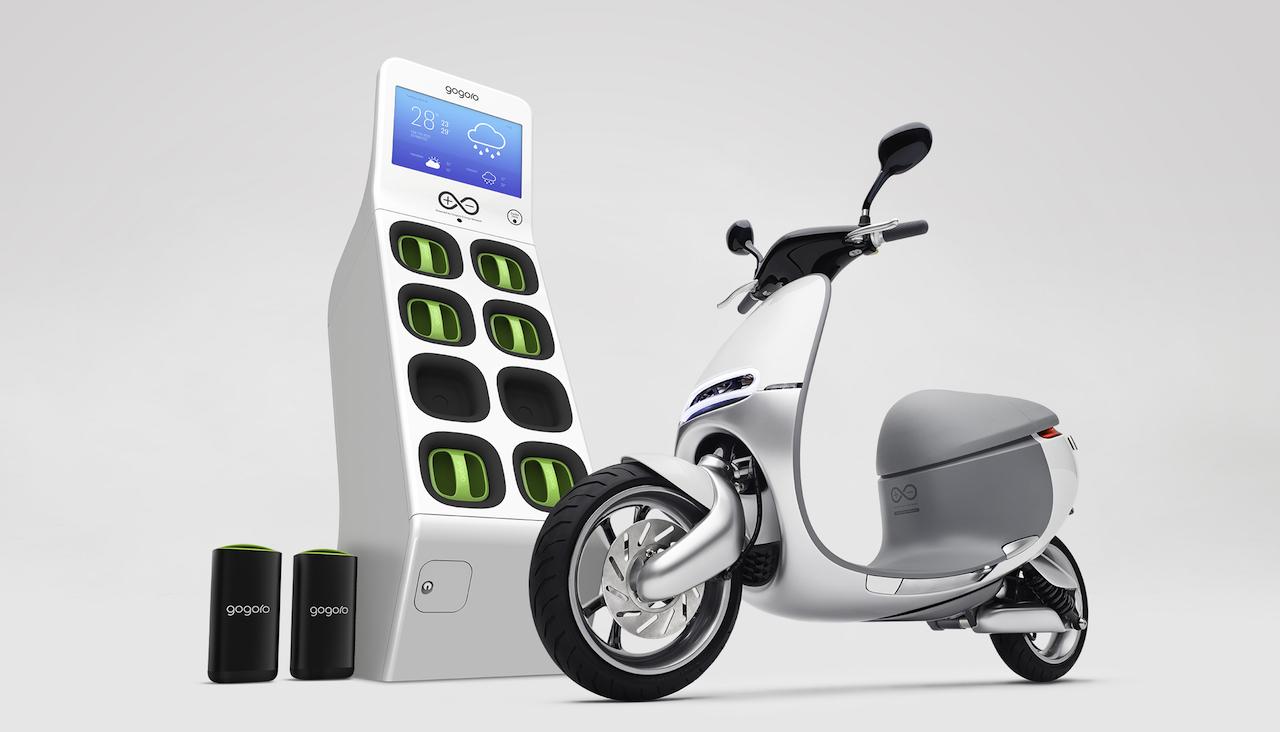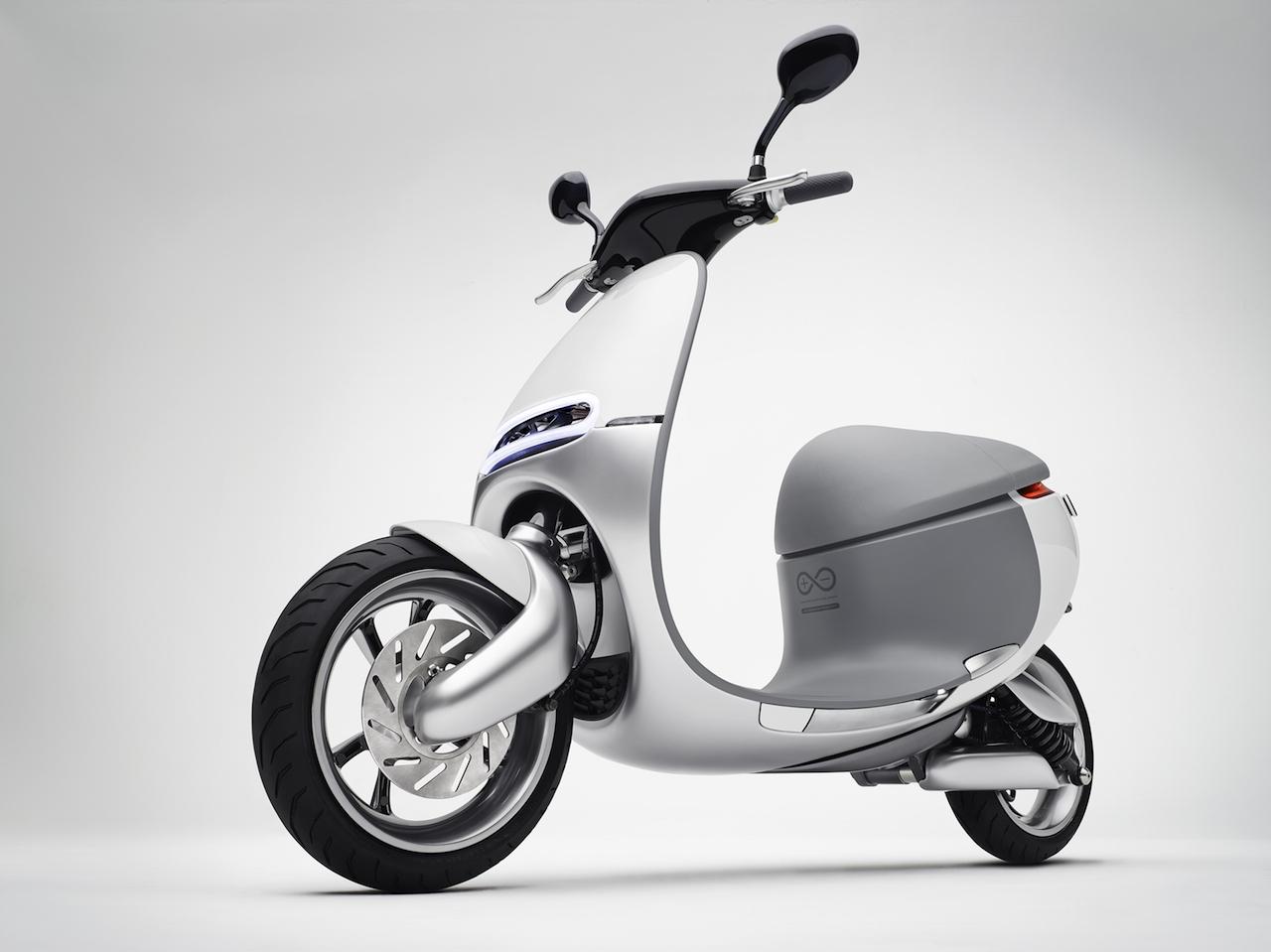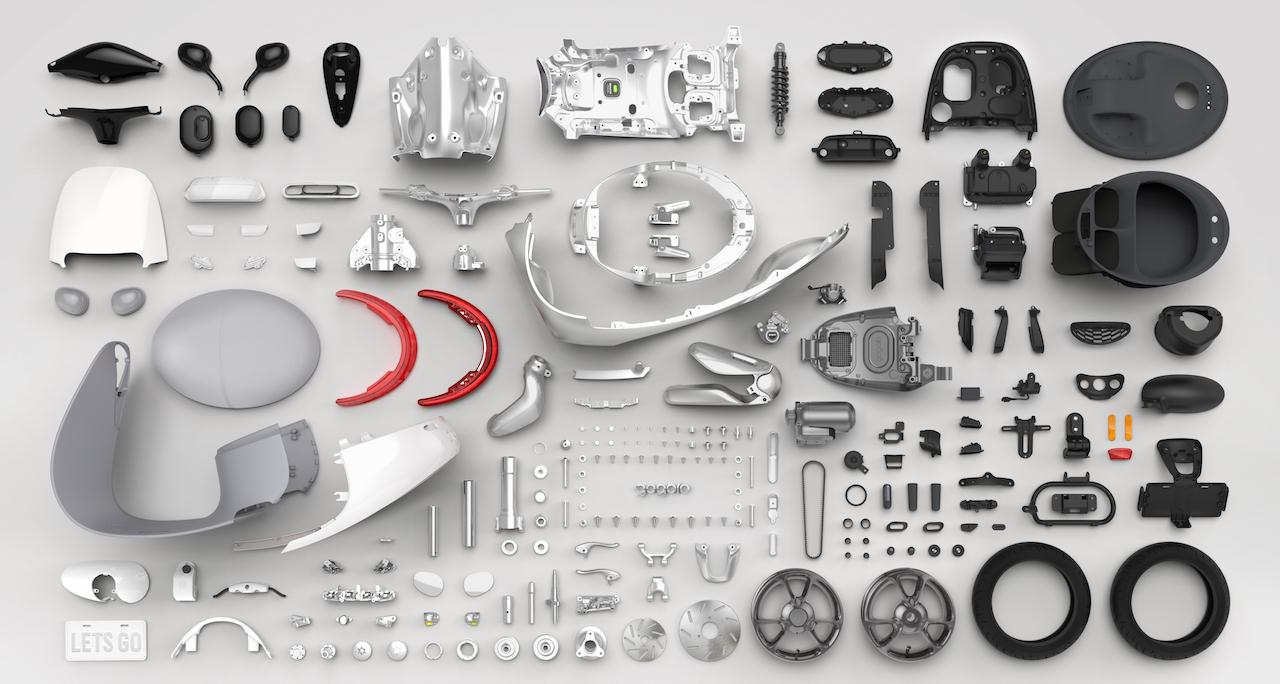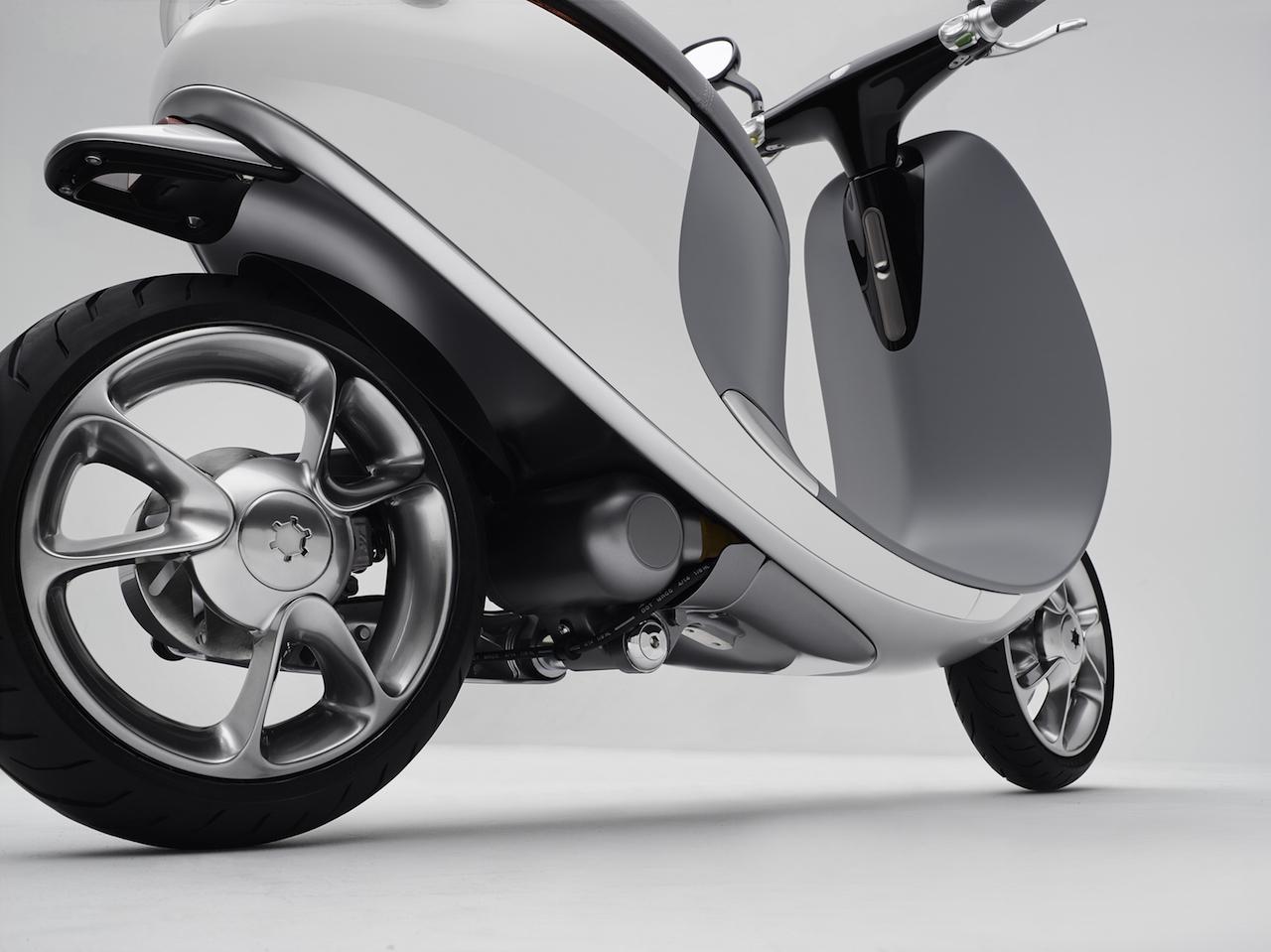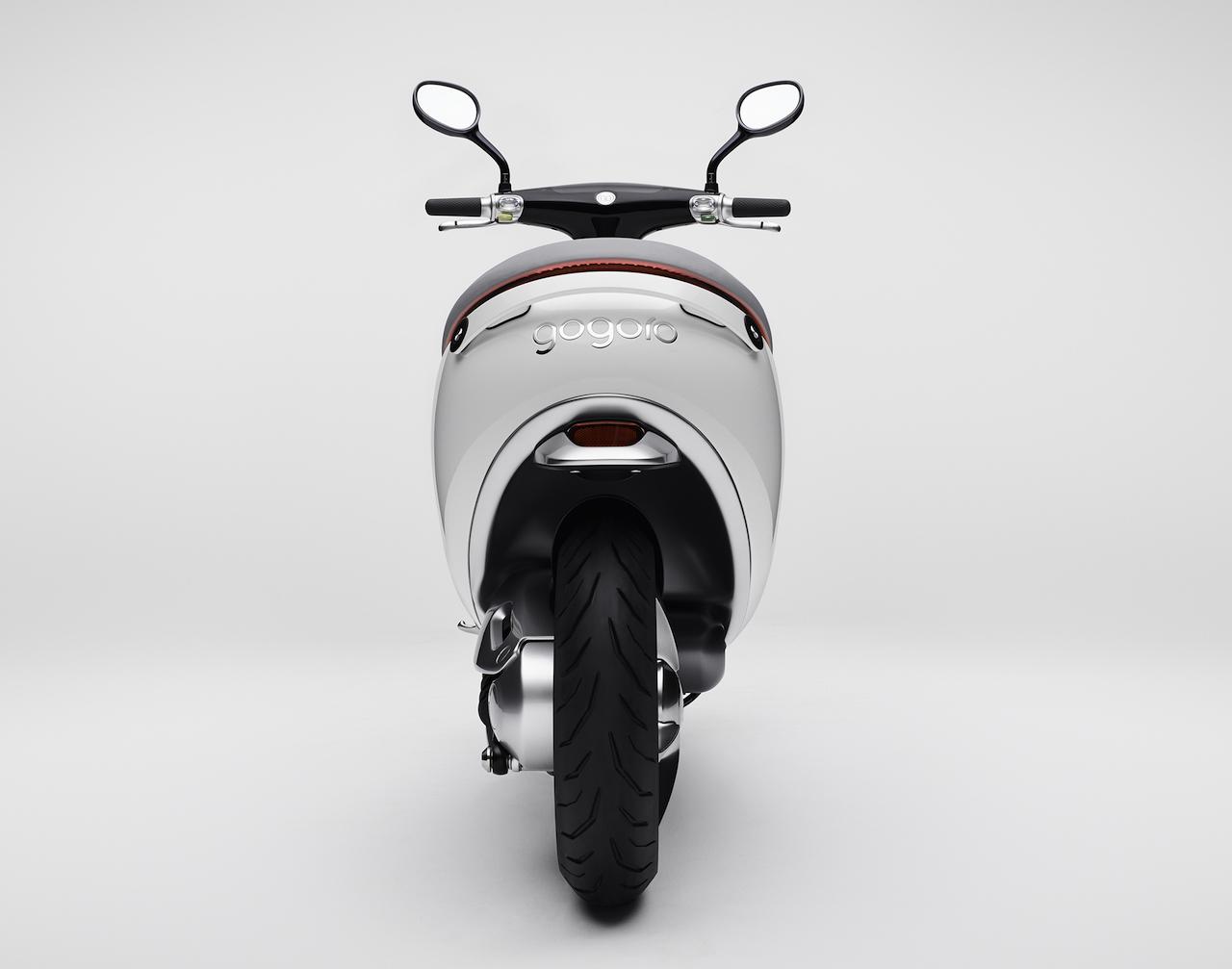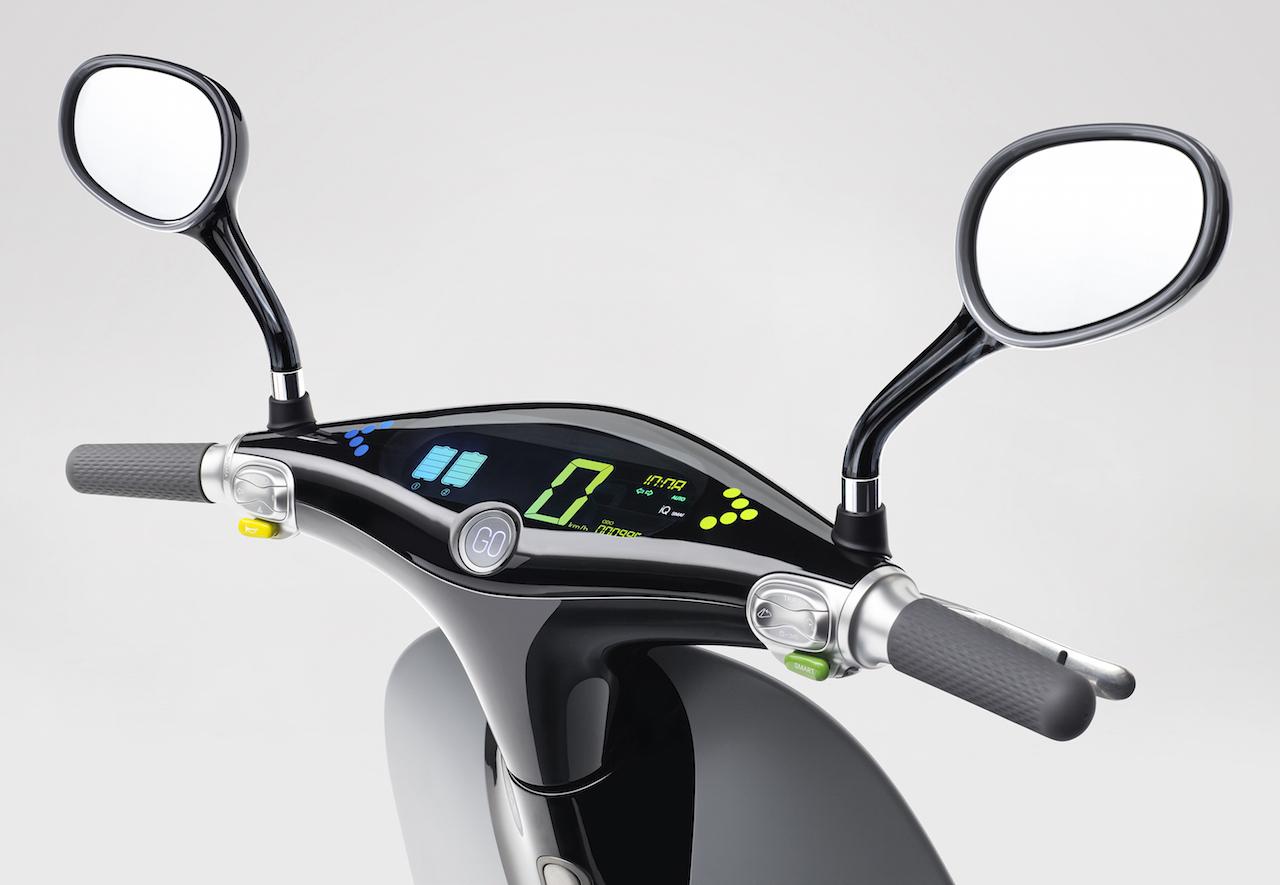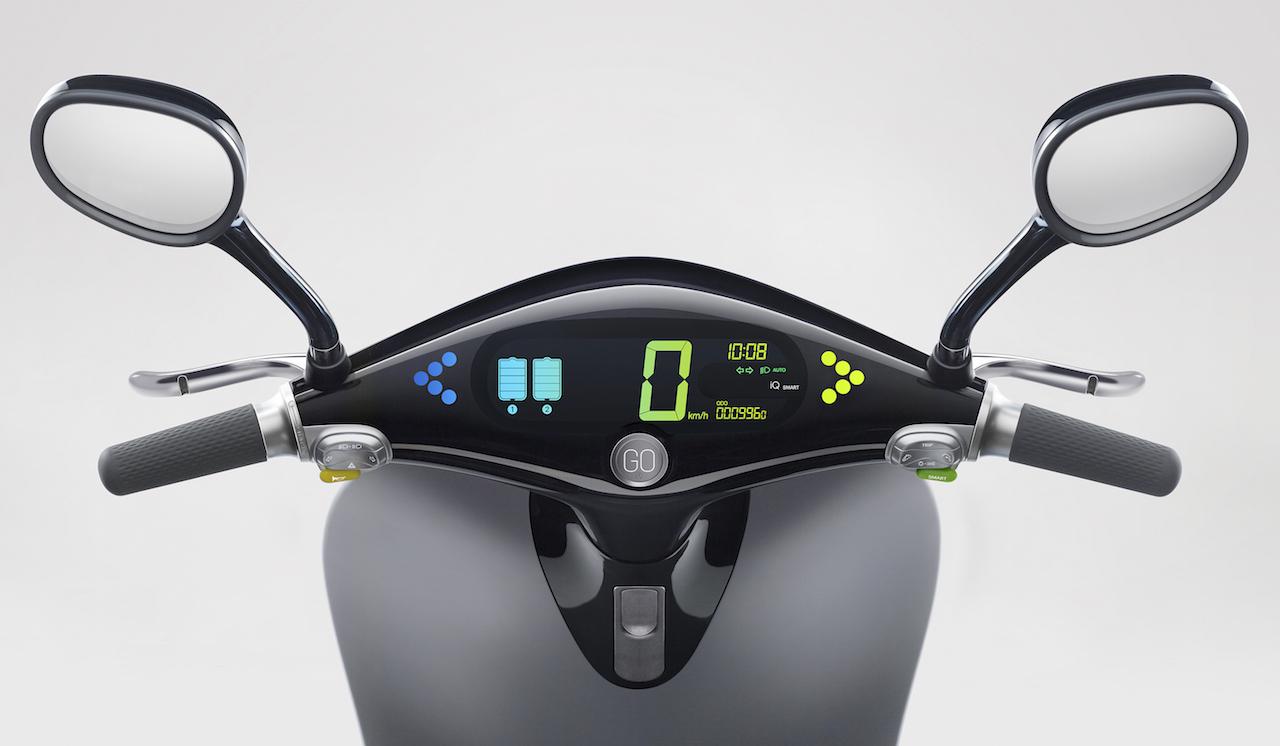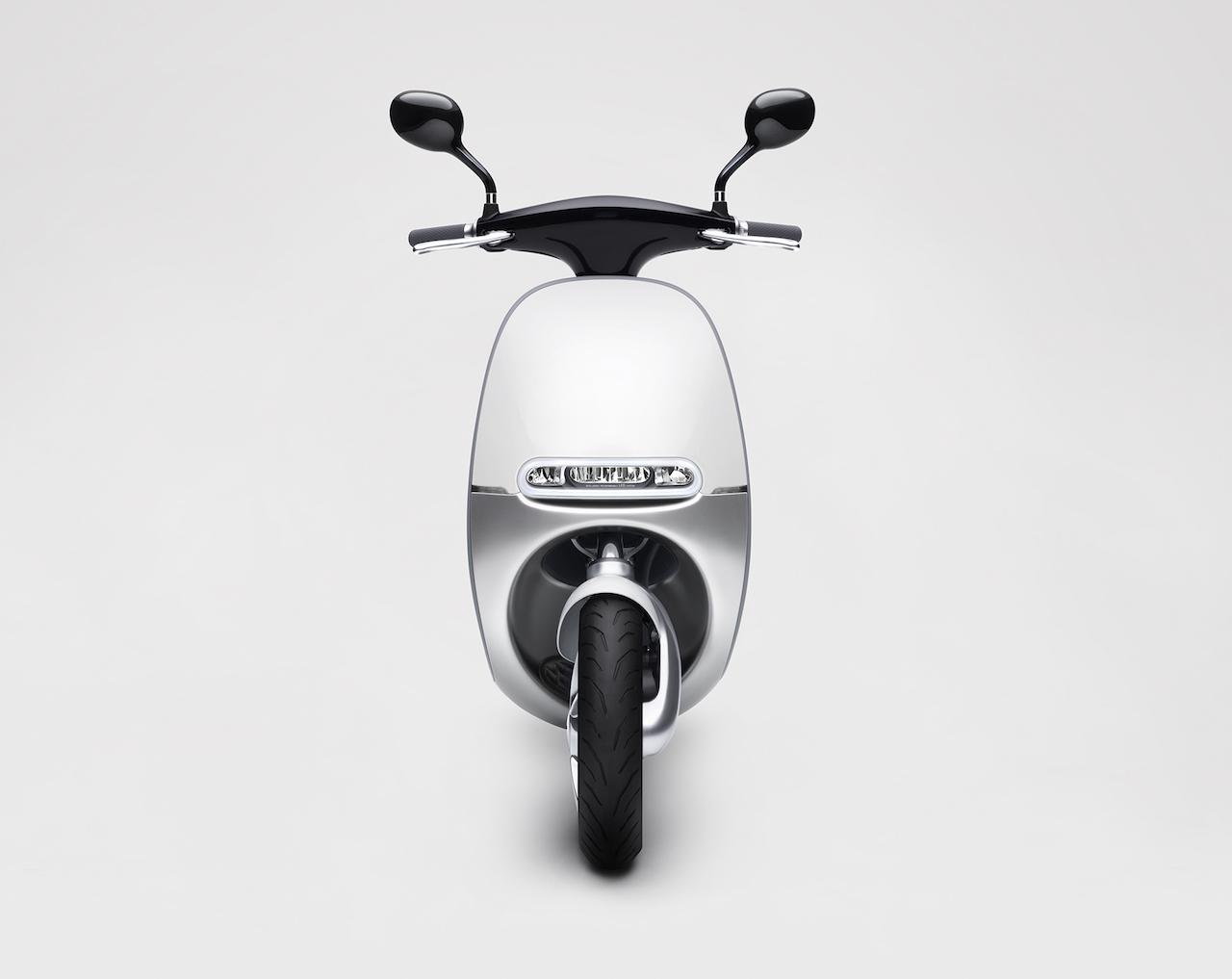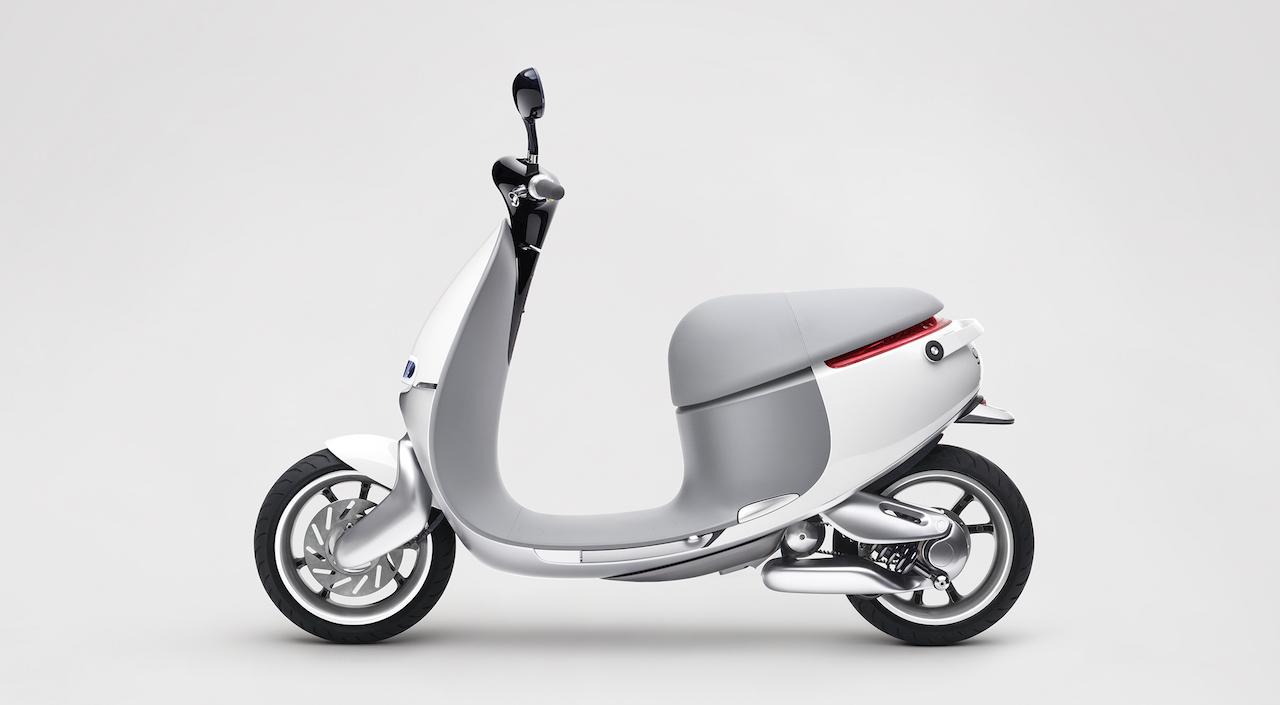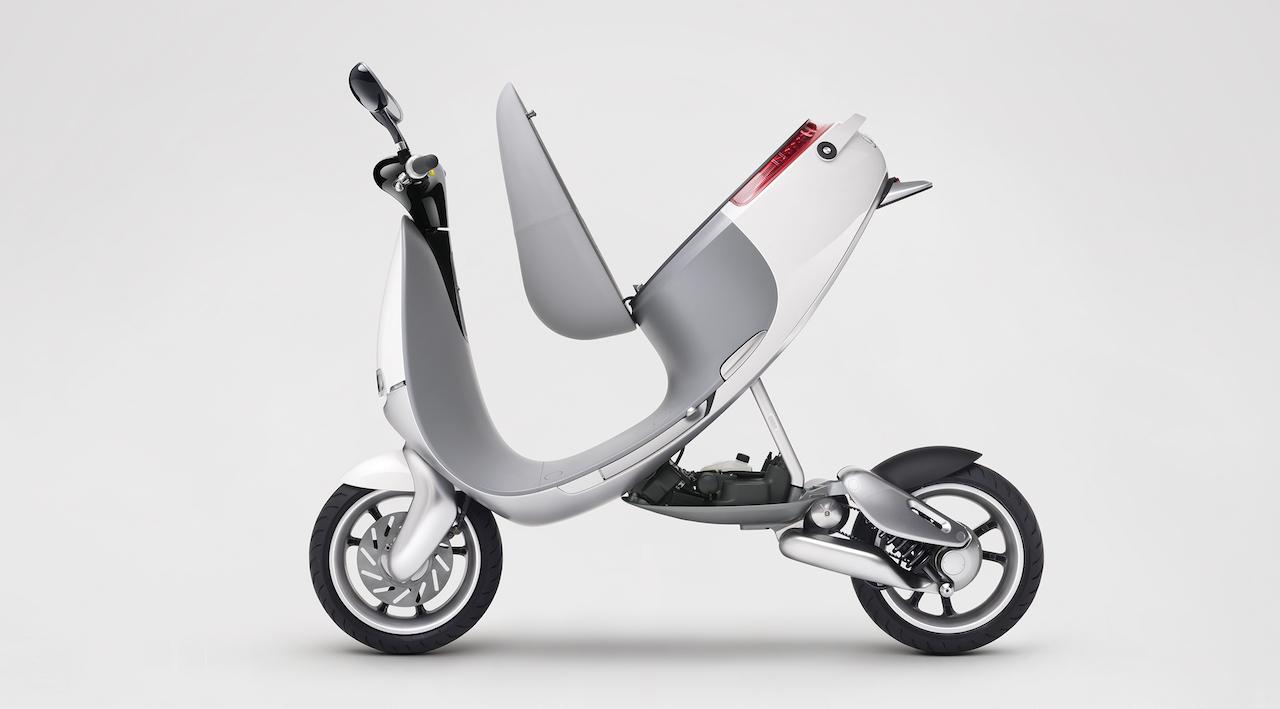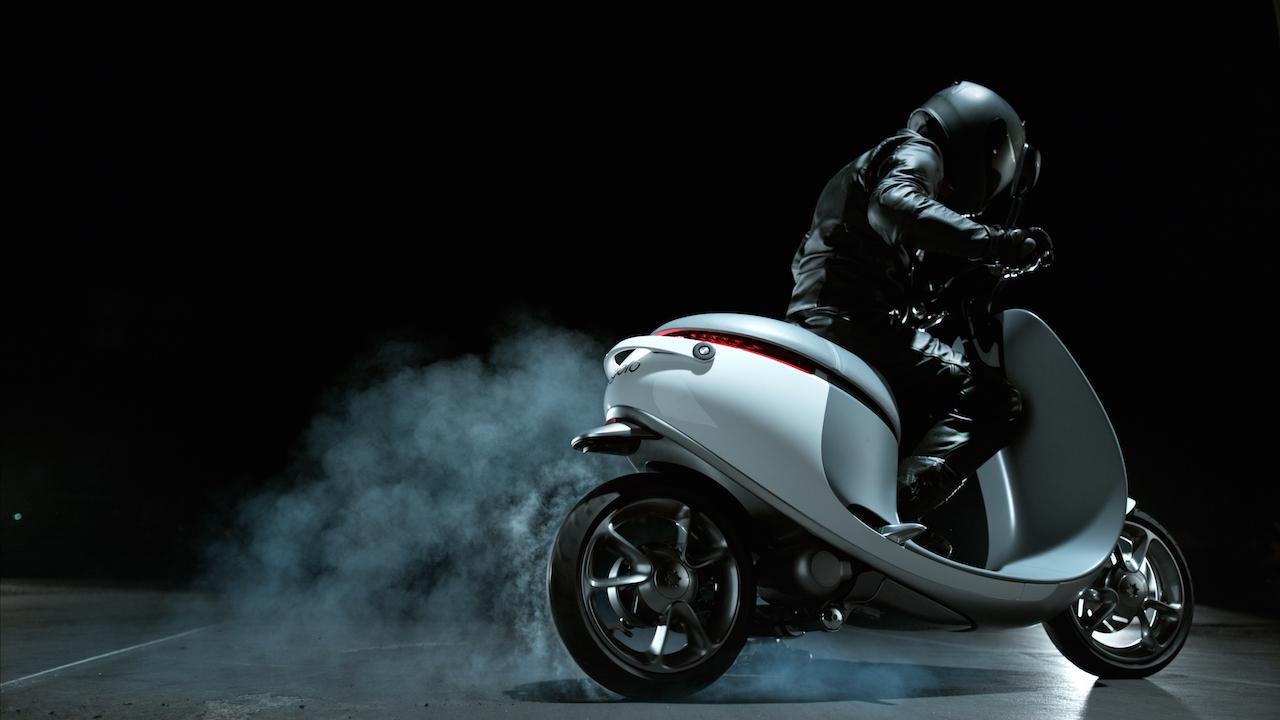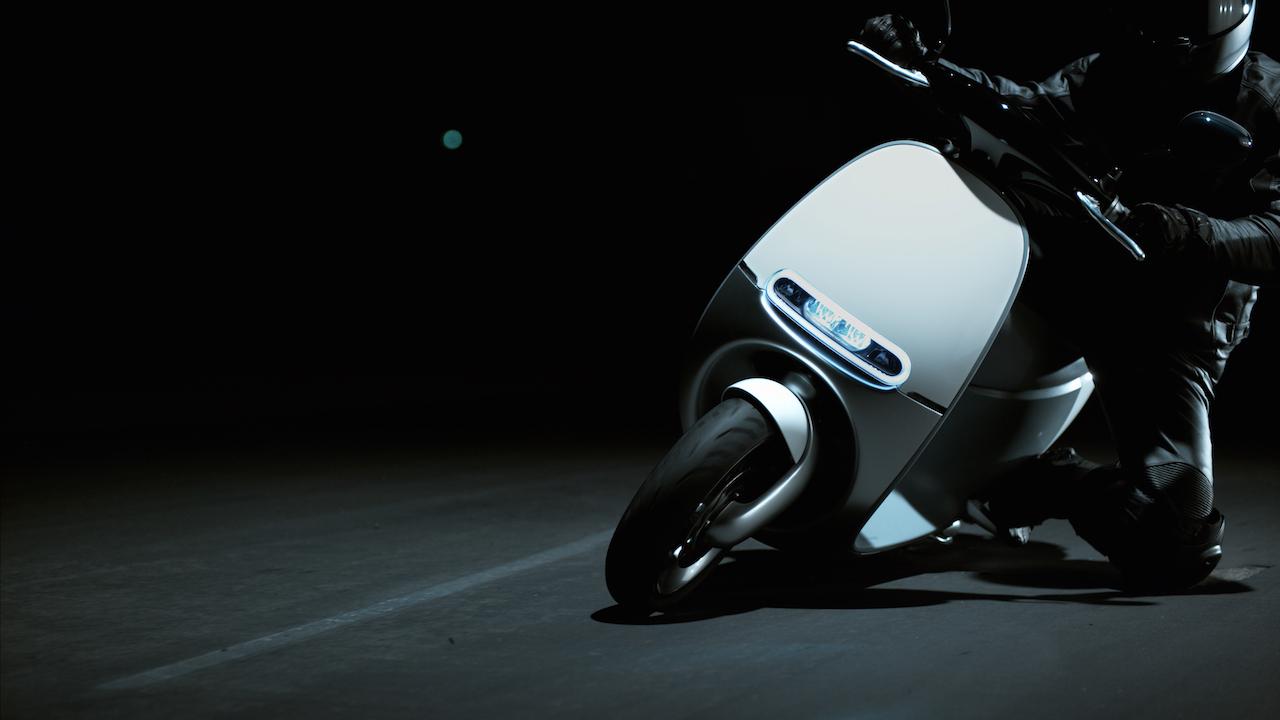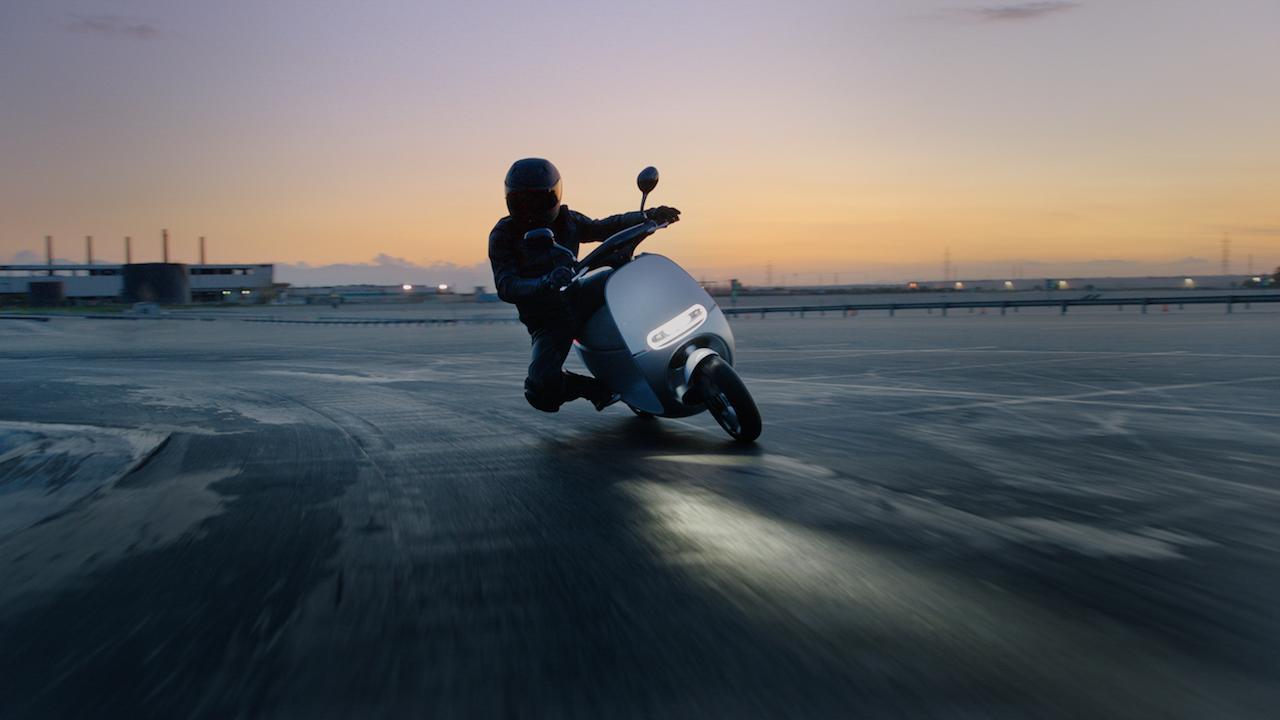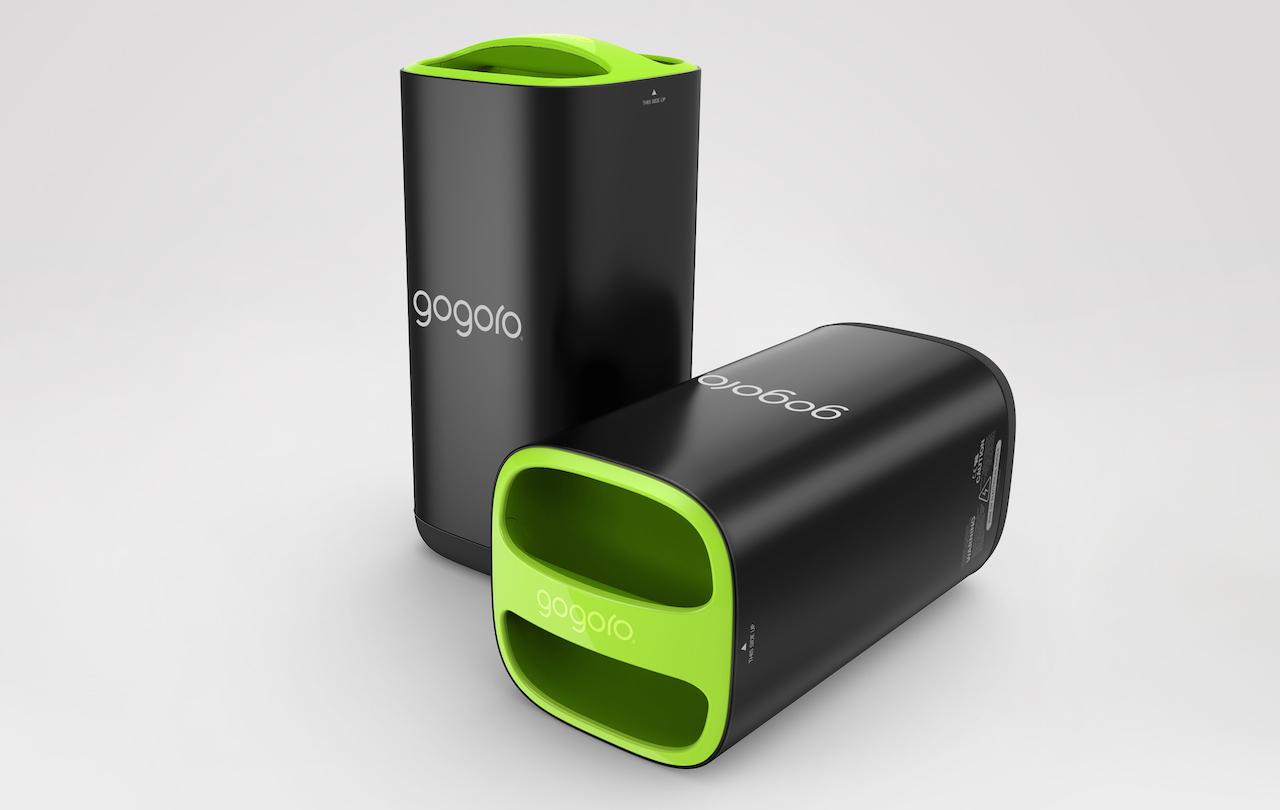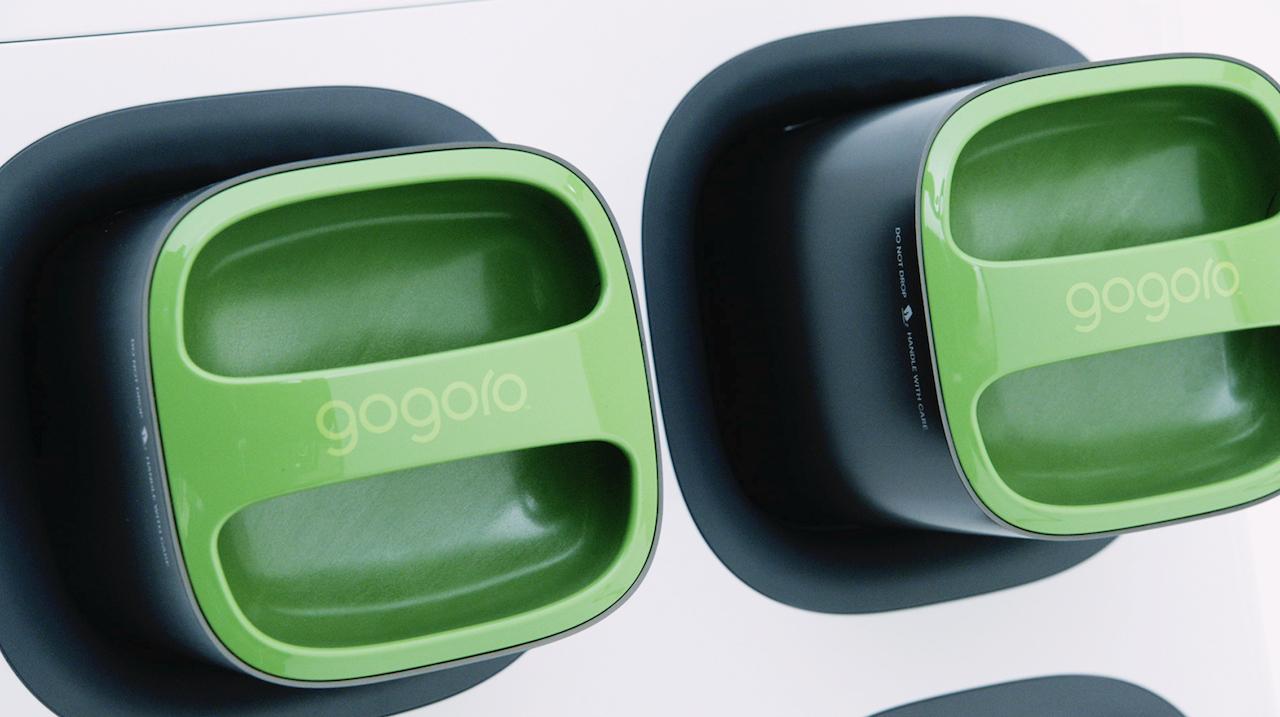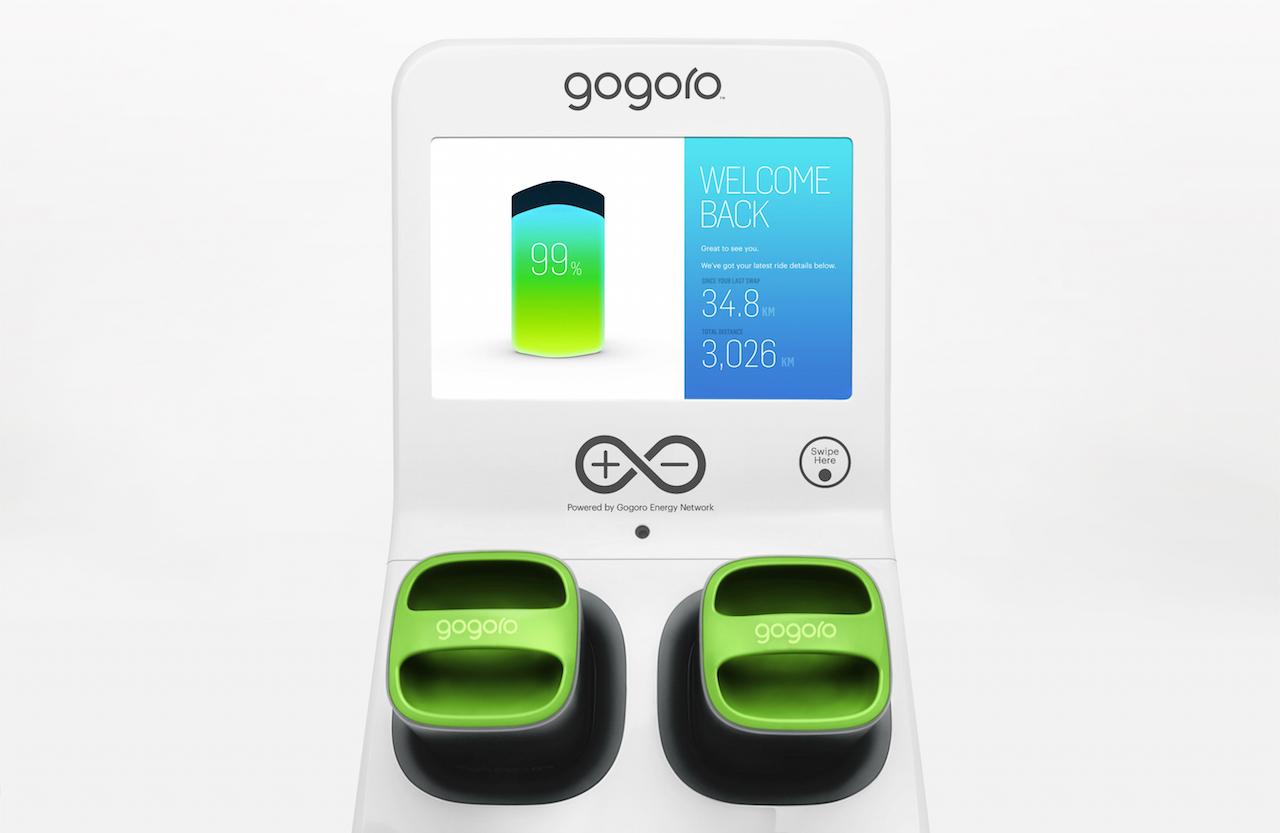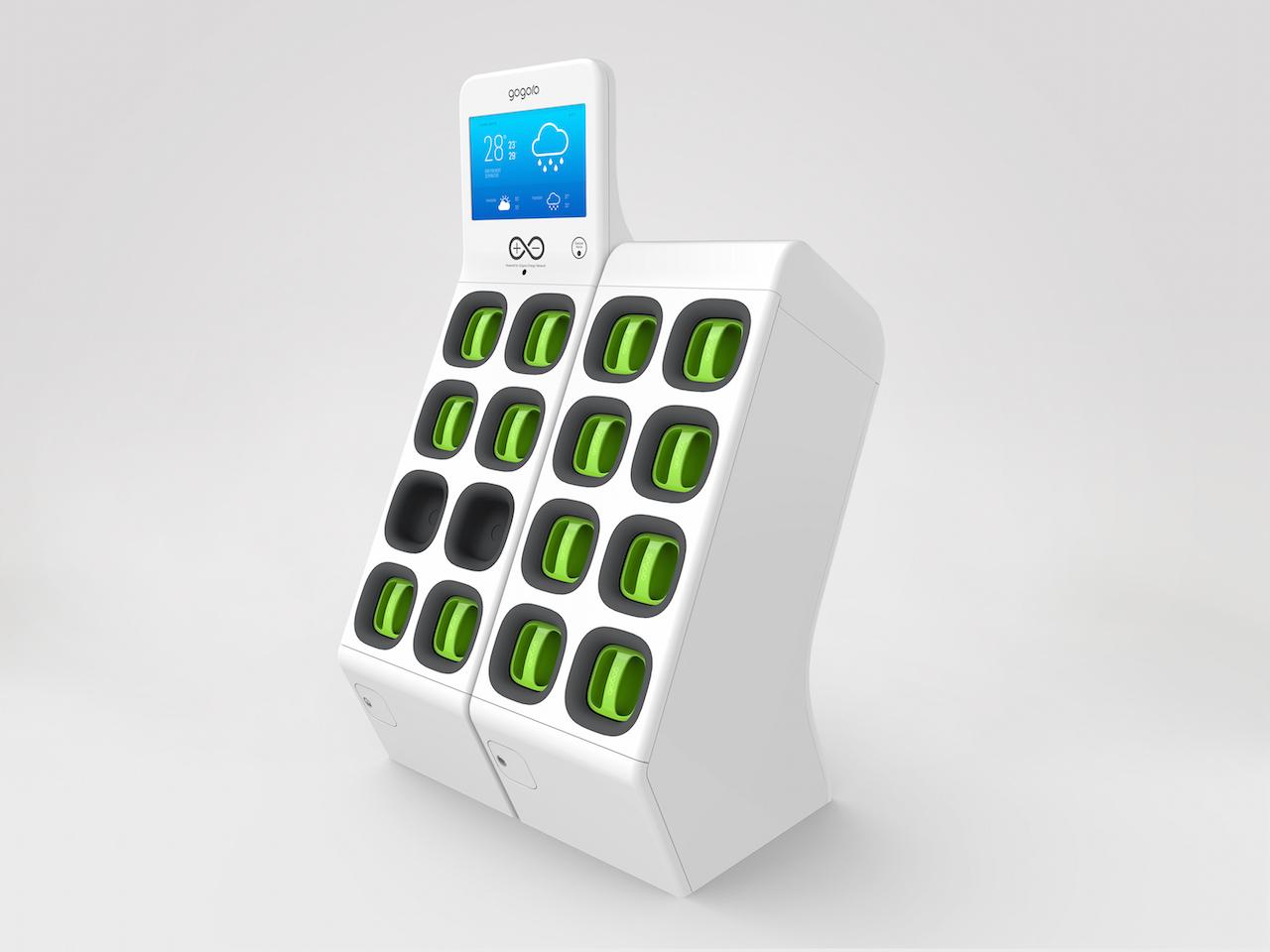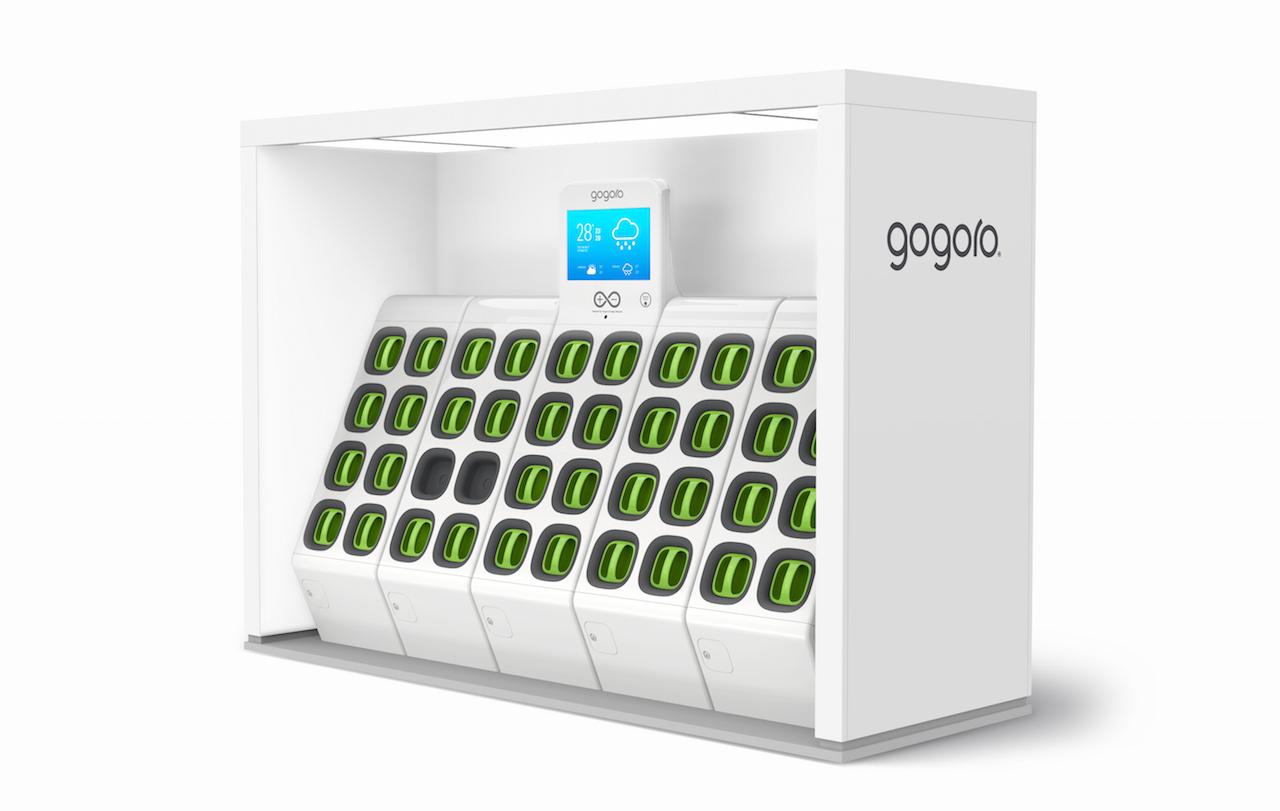Gogoro Smartscooter Is Tesla For The Everyman
Last we heard of Gogoro, the mysterious startup was promising a new age of batteries for mobility in smart cities, and clutching a sheaf of patents to that effect: now, we know what it's been working on. The Gogoro Smartscooter and its companion Gogoro Energy Network – essentially a city-wide infrastructure of charging stations for easily-swapped battery packs, offering up to 60 miles range - has been fully announced at CES 2015 today, but I caught up with the company ahead of time to find out why the founders think this is far, far broader than just urban transport.
Gogoro is the brainchild of Horace Luke, formerly of HTC and Microsoft, along with CTO Matt Taylor. Set up in 2011, and recipient of $50m then and near to another $100m now, the company has created not only an electric scooter from scratch, but co-developed a system of interchangeable, NFC-enabled battery packs with Panasonic, and the hubs to recharge them.
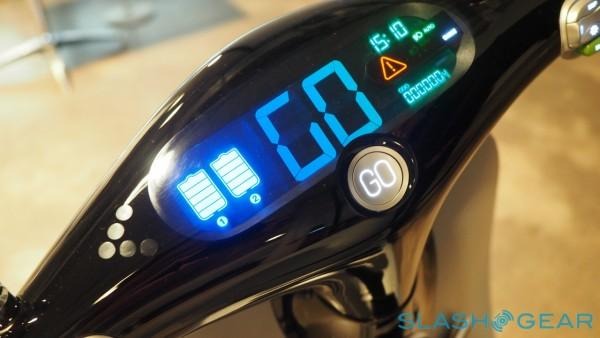
Riders buy the Smartscooter upfront – Gogoro is yet to confirm exactly how much that will cost – and at the same time sign up for a subscription for unlimited access to battery swaps and roadside assistance. Those swaps happen at GoStations, with each battery a stubby block with rounded edges.
Inside each of those blocks is enough juice for 30-60 miles of riding, depending on style (Gogoro told me you'll see the top end of that range if you ride at 25 mph, but it could halve if you push the scooter to 30 mph; obviously real-world conditions will vary). Gogoro's aim is to have every GoStation within a square mile of its neighbor, in places you might expect like gas stations, parking lots, and even in convenience stores.
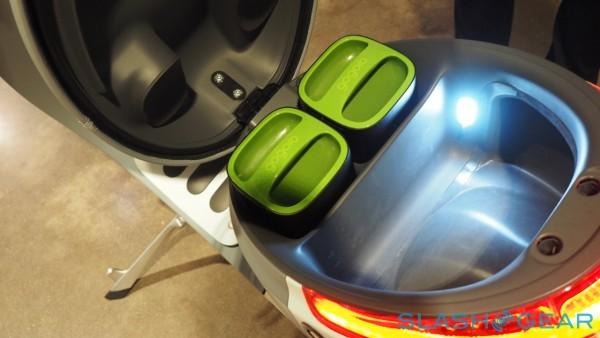
This is no car battery, mind. Gogoro designed the casing, which only has two external contacts and can be slotted into the Smartscooter no matter which way it's rotated. While it may be lacking in physical connections, it's actually pretty smart: there's NFC to communicate with the bike and the charger, as well as 25 different sensors.
As you'd expect, there's a link to your smartphone: in Gogoro's case, that's over a low-power Bluetooth connection, with the companion app acting as the unlock system and the ignition key. However, it's also the scooter's link to the Gogoro iQ System, in effect the network between charging infrastructure, individual riders, and more.
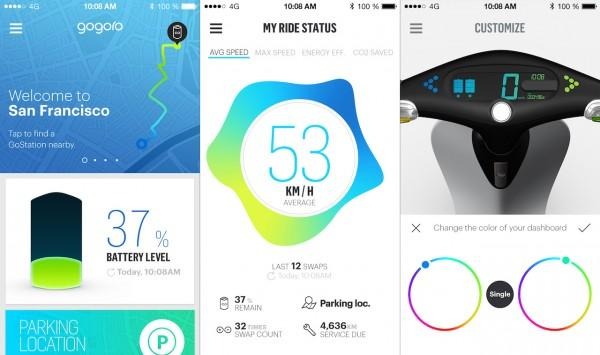
Through the app, you can find the nearest GoStation – the scooter learns your riding style, and refines its estimates as to range and where your most convenient swap point it; you can reserve a battery in advance, so as not to be left dry when you get there – as well as customize the dashboard colors, the lock/unlock audio, and the lighting themes. It's also where ride feel and throttle responsiveness can be adjusted.
The Smartscooter itself is no off-the-shelf moped retrofitted to Gogoro's purposes. In fact, it's been designed by the company from the ground up, including power train, suspension, chassis, and all the electronics.
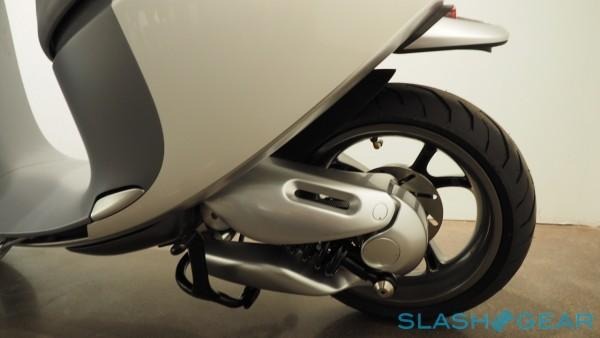
Dubbed the G1, the motor is fluid cooled and puts out 8.58 HP and 18 lb-ft of torque; that might not seem a lot, but because the scooter is a mere 247 lbs unladen, and since all that torque is available from a standstill, it should be perky enough for the city.
The figures bear that out: 0-31 mph in 4.2 seconds, and a max speed of 30 mph, and while I couldn't ride it myself, during a demo I was shown it's more than capable of burn-outs – Gogoro didn't want me to record that, but you can see the results below - and even makes an interestingly electric roar when you hit the "gas".

The chassis uses an aluminum monocoque, and is paired with an aluminum inverted single shock single arm at the front and an aluminum multi-link suspension system at the back. Disc brakes are fitted front and back, and there's an illuminated 0.85 cubic foot trunk with room for a full-sized helmet as well as a USB port for charging up a phone. It can be opened either with a button on the bike, or via the app.
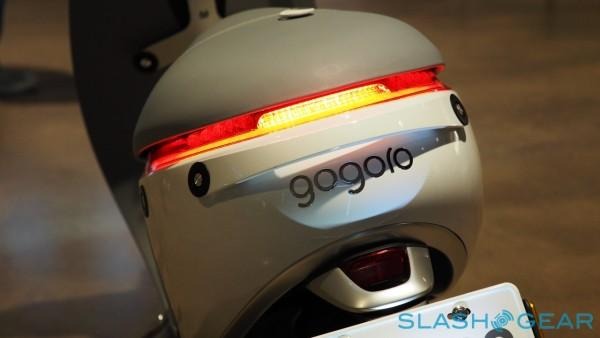
All of the lights are LEDs, from the headlights (using the same tech as in Audi's R8 and the Mercedes-Benz CLS, no less) to the turn signals, taillights, and hazards; the Smartscooter automatically powers down when the kickstand is deployed. More interesting, though, are the sensors woven through the bike, of which the digital compass, gravity, shock, ambient light, and thermo sensors total thirty in all.
Together they report on Smartscooter health and status, either through the smartphone connection every ten minutes, or whenever you swap a battery via the NFC link there. Should something require attention, the majority of the bodywork and other components are held on either magnetically or via a single screw, for easier access.
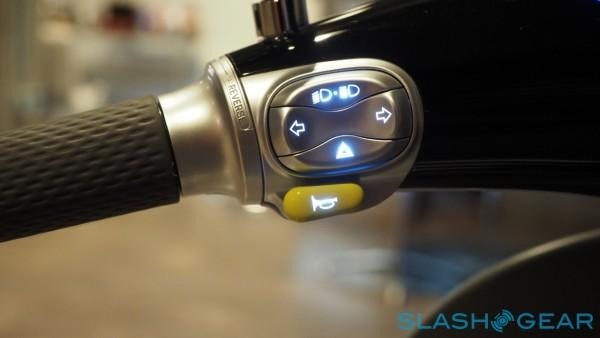
Gogoro's decisions have been carefully made, and while the Smartscooter may be a long way from its traditional forebears, it's not to say it hasn't learned from them. The most common scooter has a 120-125 cc engine, for instance, comprising around 80-percent of the market, and so that's the sort of performance benchmark Gogoro had in mind. In fact, the EV power train is around 16-percent swifter than its gas equivalent.
It's also more willing to lean into the corners, balanced so that the driver's head is at the pinnacle of a near-perfect triangle, and thus more stable as you tackle the corners. While I wasn't able to ride it myself, Luke tells me one of the scooter's primary goals was to deliver fun handling, even if you're doing city speeds.
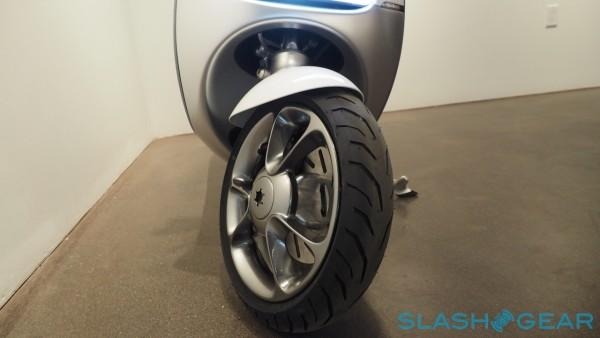
There are some other considered touches, too. The lights automatically turn on when it gets dark, and then dim when the Smartscooter is at a stop; they're passively cooled and super-low power, too, to make the least possible impact on the battery pack. It's the most weatherproof scooter in the industry, too, and so while you might still get wet, at least you'll make it into work.
Gogoro's ambitions don't end with two wheels. A four-door vehicle isn't out of the question, Luke told me, and since everything is modular, it wouldn't take much for the company to scale up to a city car. A single battery could also power the average house for an hour, or run a home furnace for an extended evening. Those with more technical demands could potentially power a forty server rack for 20 minutes, or a single laptop for 25 hours.
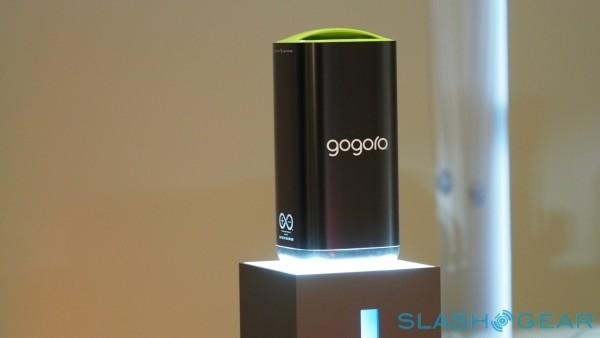
"The world is changing," Luke concluded, pointing out that as so-called "mega cities" snowball, eventually 3-in-5 people will end up living in them. Of the 12-percent of household income currently spent on energy-related expenses, nearly half of that is gasoline, he pointed out, and while Tesla may be doing interesting things, the cars the darling of Silicon Valley makes are only really relevant to 1-percent of the population.
Gogoro's success or failure hinges on a number of factors, all of them challenging. Most obvious is the price: the company is yet to announce just how much the Smartscooter or its companion battery subscription will cost, with Luke committing only to a launch sometime, somewhere, this year.
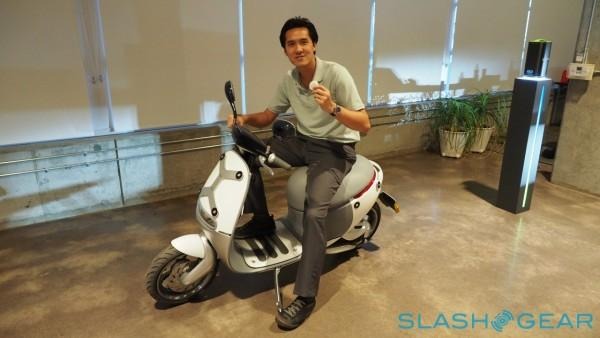
GoStation infrastructure is another significant issue, and how well Gogoro manages potentially having too many batteries returned to one location and yet not enough to another. Range anxiety is just as applicable when your EV is a scooter as it is when you're driving a car, and Smartscooter owners will need to be convinced that they can get access to energy when they need it, without having to go too far out of their way.

Then there's what to do as those batteries pile up. Each takes around 1-1.5 hours to recharge, and has a roughly 2,000 cycle recharge life; however, that's only using around 30-percent of their capacity. The remaining 70-percent – less efficiently delivered, perhaps – is being earmarked for powering homes, data servers, or other applications.
First impressions are good. The Smartscooter looks great, a solid mixture of space-age and retro styling, and the battery swapping mechanism is certainly easy to do. Gogoro claims six seconds is all it takes, and I can certainly believe that. If the price, power availability, and launch locations are right, Gogoro could find itself with a fledgling hit on its hands, though it's too soon – and there are too many pieces missing – to say that for sure today.
MORE Gogoro

